You are using an out of date browser. It may not display this or other websites correctly.
You should upgrade or use an alternative browser.
You should upgrade or use an alternative browser.
MarColMar CETME LC (Carbine) In Detail
- Thread starter Combloc
- Start date
The #1 community for Gun Owners of the Northeast
Member Benefits:
No ad networks! Discuss all aspects of firearm ownership Discuss anti-gun legislation Buy, sell, and trade in the classified section Chat with Local gun shops, ranges, trainers & other businesses Discover free outdoor shooting areas View up to date on firearm-related events Share photos & video with other members ...and so much more!
Member Benefits:
Combloc
Stop Negassing me!!!!!
Thank you Boss. That's very kind of you to say sir.
The only thing we haven't looked at yet is the stock so that's what we're gonna do now.
Here, it's shown in the extended position alongside an HK93 stock for dimensional comparison:
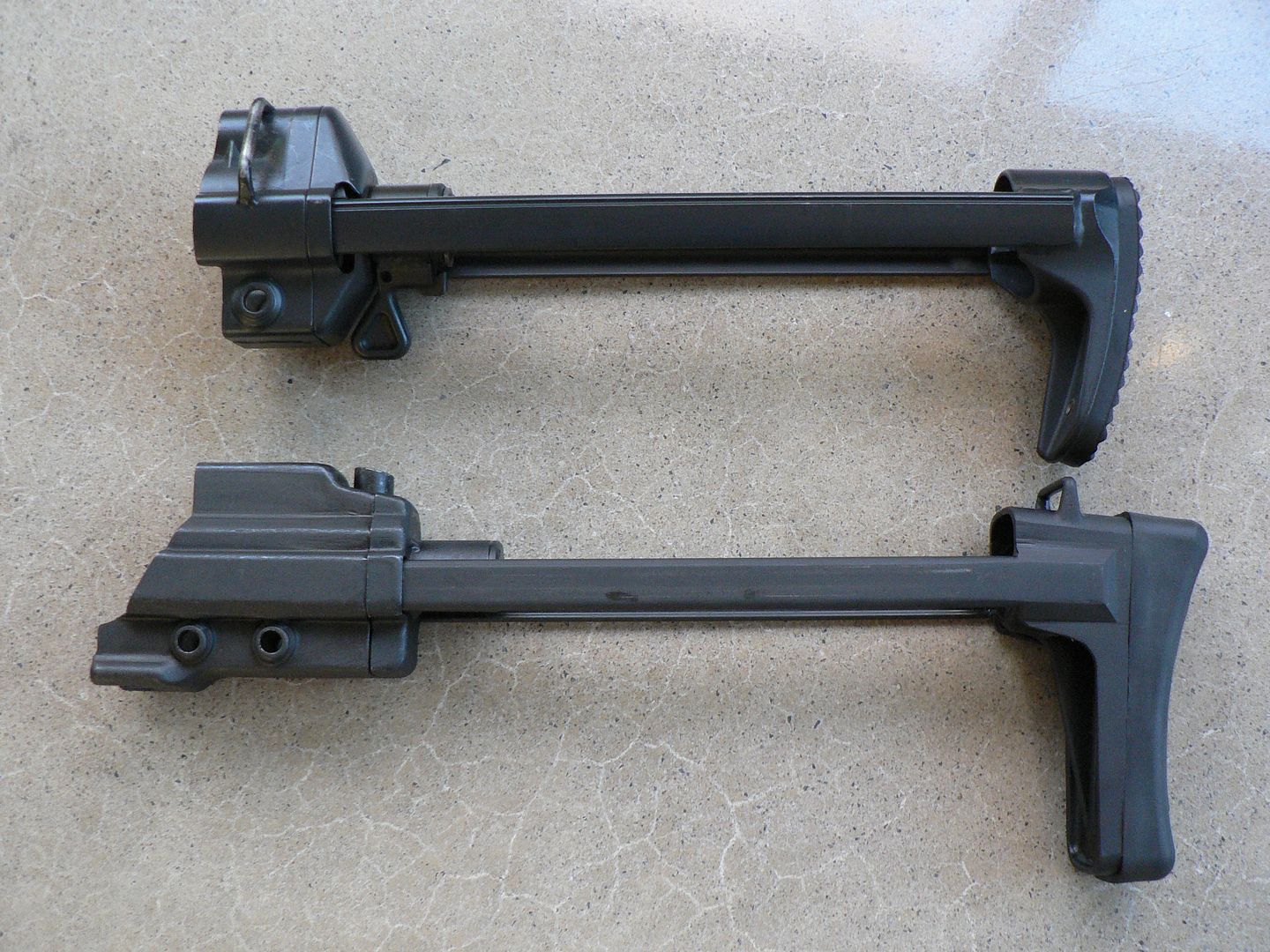
And retracted:
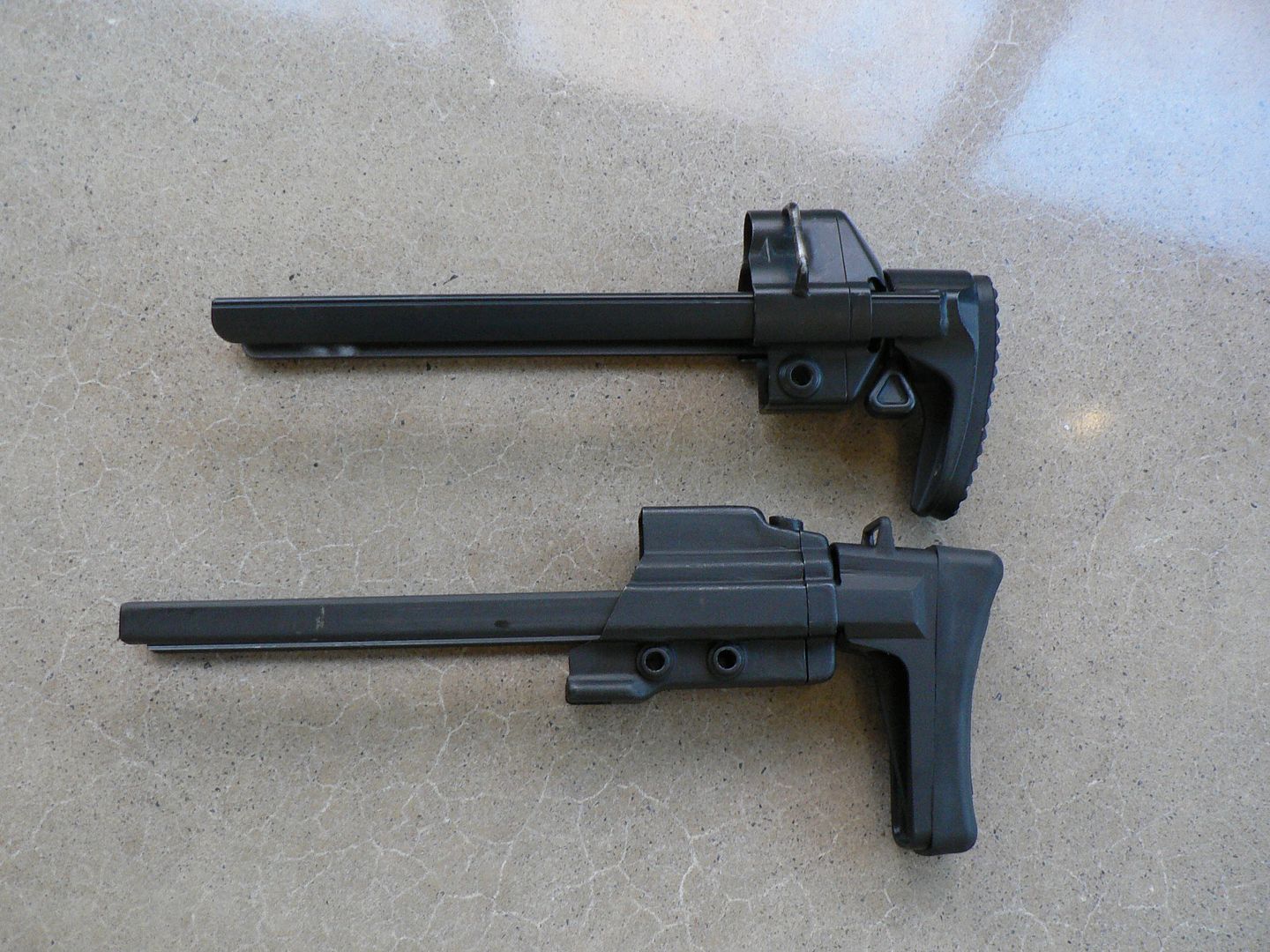
The butt pad is steel wrapped in rubber and is the same one used on both the L and LV. As mentioned earlier, it's manufactured by MCM and is identical to an original when mounted:
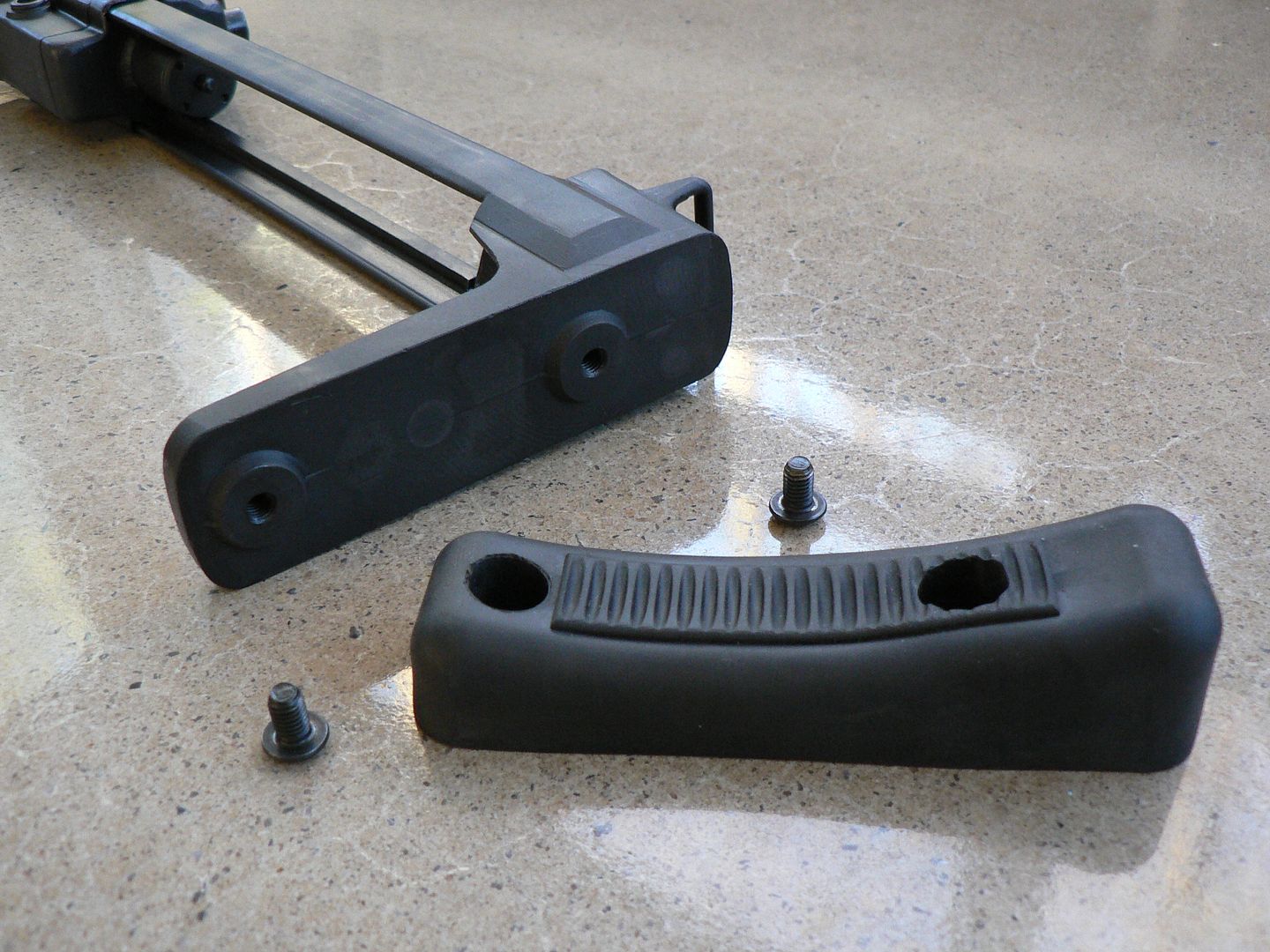
It's held on by two hex screws (originals were probably slotted) and, because the stock itself is of original Spanish manufacture, the screws are metric threaded.
They are also NOT interchangeable with those found on the L and LV, both of which use a screw that is longer and has standard threads because their stocks are US made:
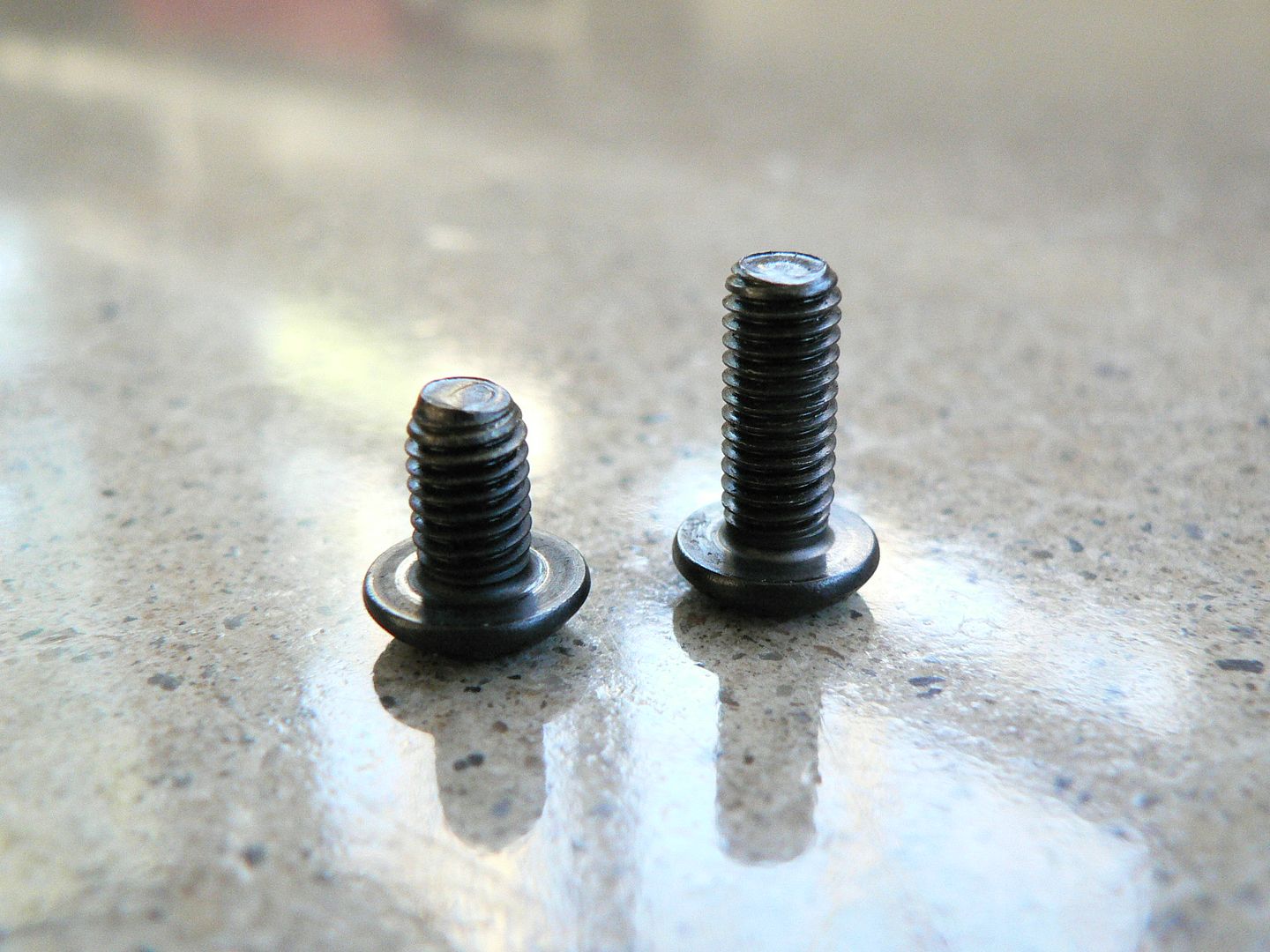
That's the LC screw on the left in case you were wondering.
A close-up of the butt with the pad removed showing the forge line:

The other side has a reinforcement rib:
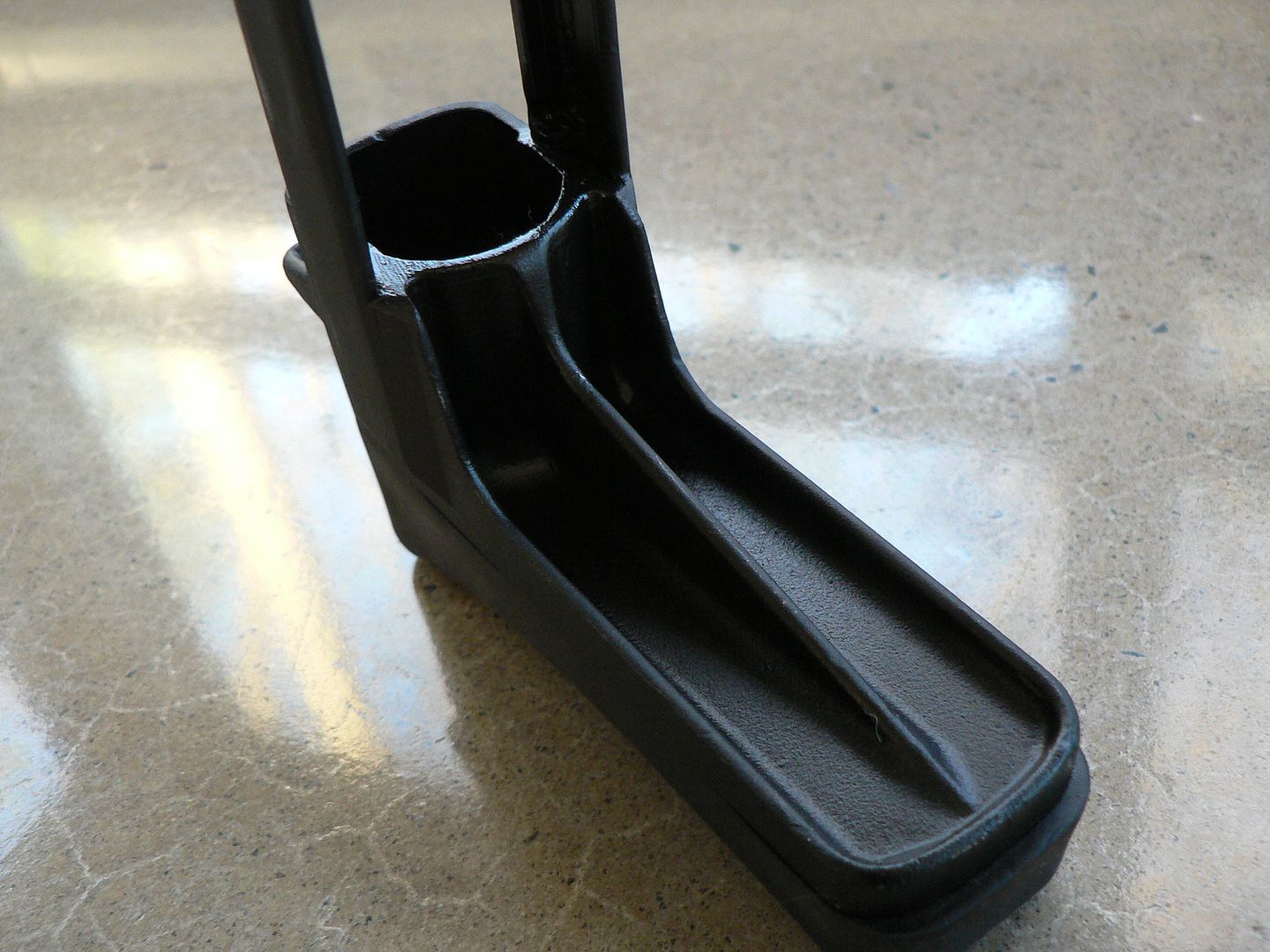
The top mounted sling swivel is a separate welded on part that is either cast or forged:
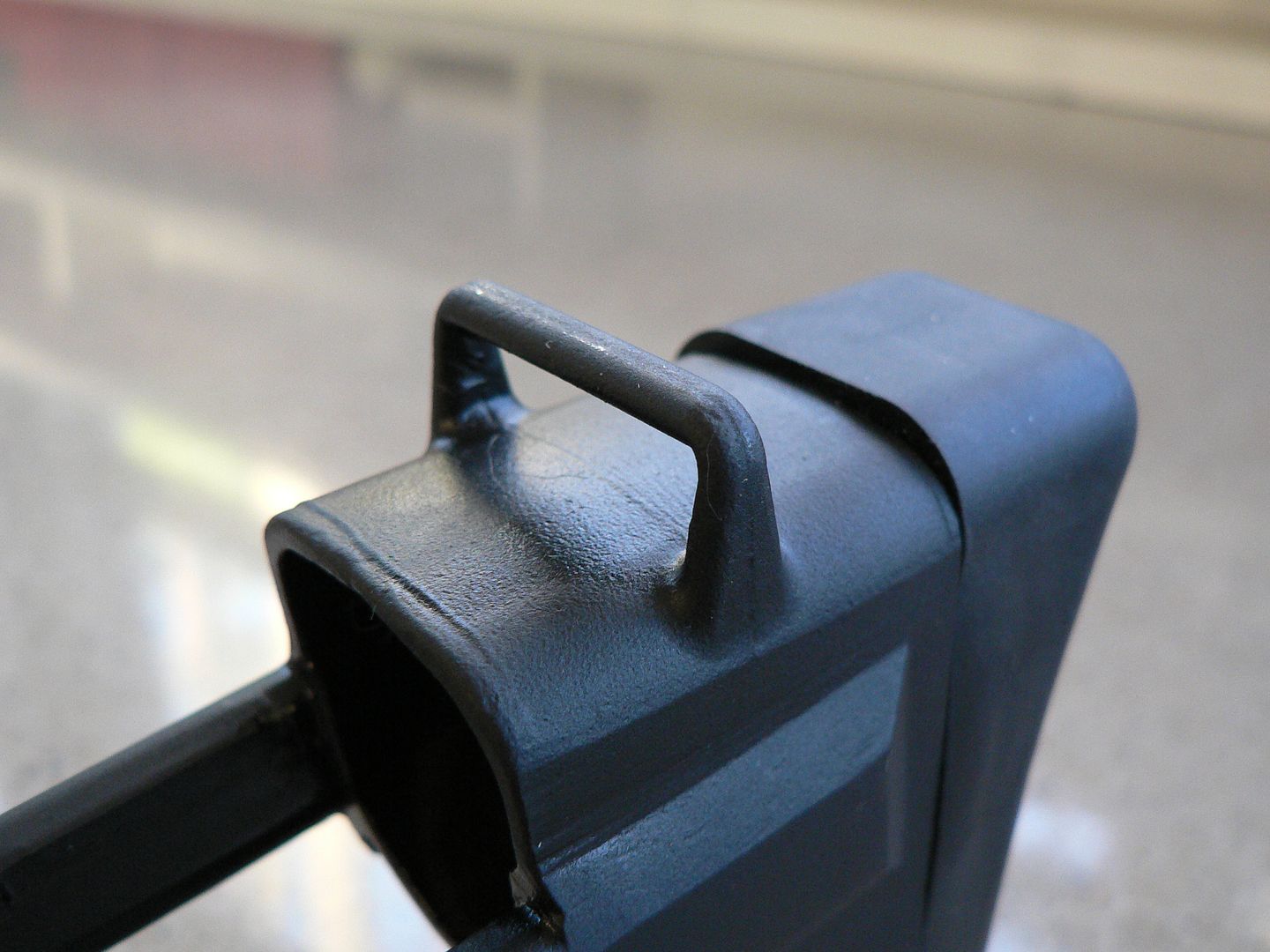
The stock arms are attached bar stock with nicely dressed welds:

There is a cavity molded into the butt allowing it to telescope around the buffer tube when the stock is closed providing a more compact package:
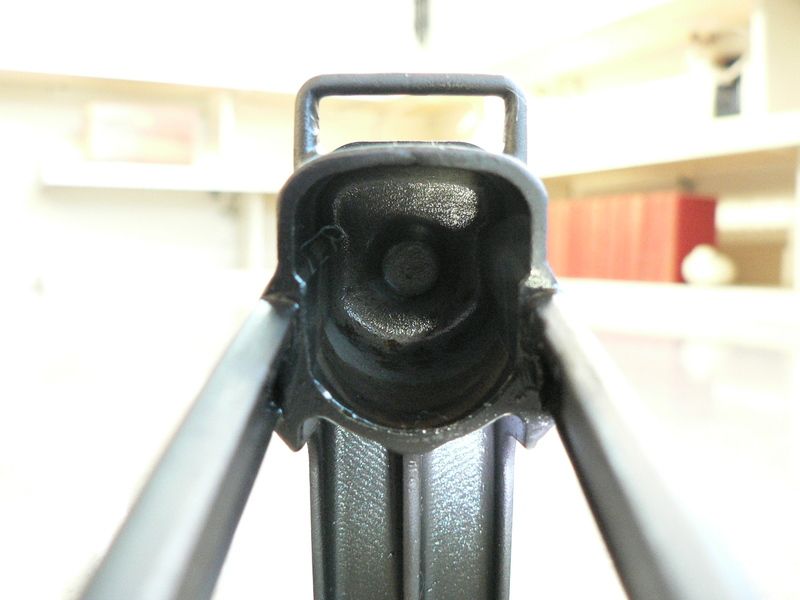
The circle seen in the middle of the cavity is a raised reinforced area that rides against the open-assist plunger built into the backplate. The who that rides against the what?? Keep reading and all will be revealed in the next picture.
Here is the backplate:
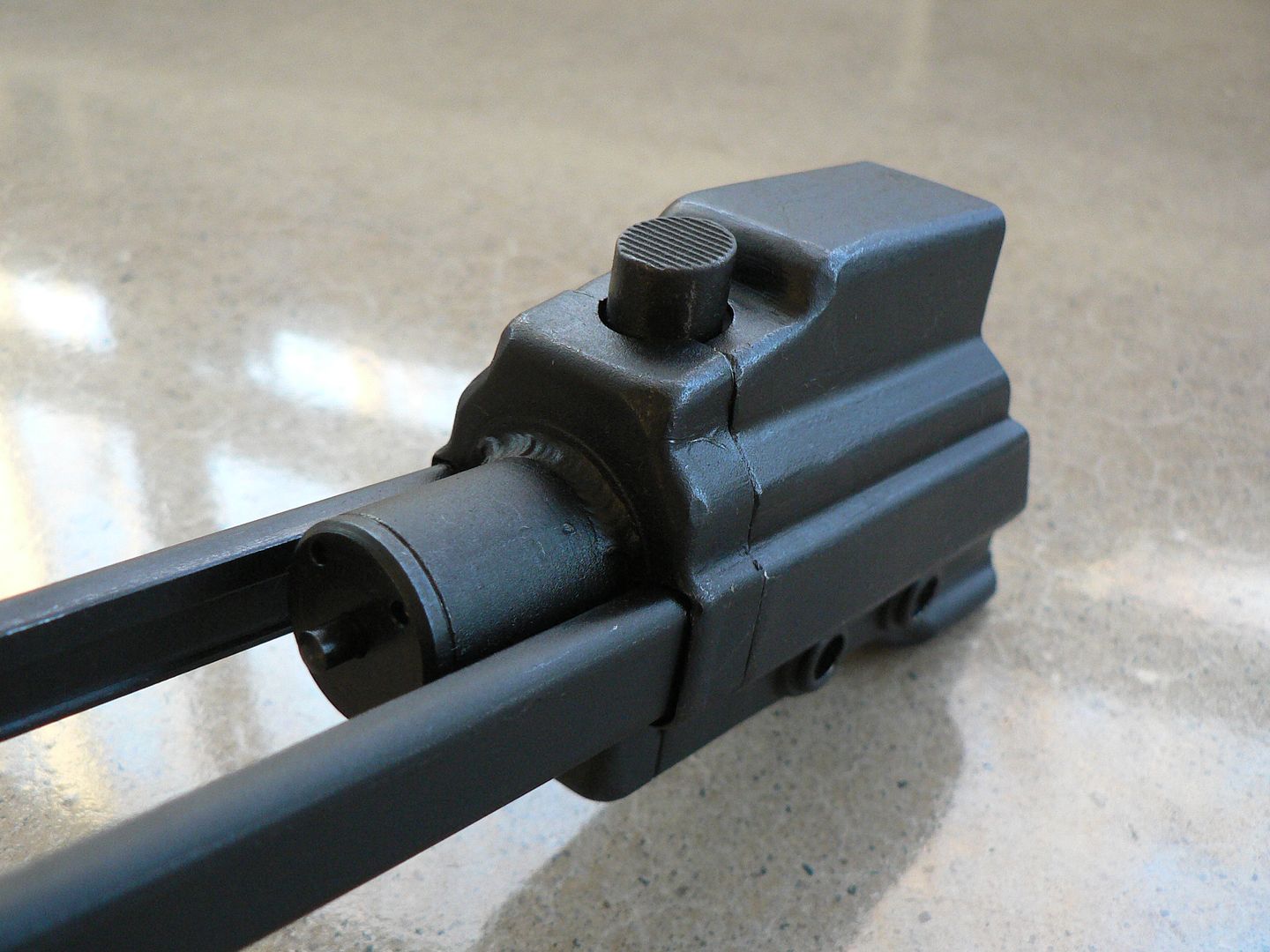
The large round bit houses the buffer spring and the little round rod sticking out of it is the spring loaded extension-assist plunger. If you're familiar with an HK A3 stock, it has one too. When you close the stock, the raised reinforced area we saw in the butt cavity pushes against the this rod and forces it into the buffer housing compressing its spring (NOT the buffer spring but a separate spring). Then, when you press the ribbed lock button on top the back plate to extend the stock, that little spring loaded rod pushes the butt plate back a few millimeters to assist you. The point of this is to allow you to extend the stock with one hand. If it wasn't on there, you would have to depress the lock button with one hand while pulling the stock to the rear with the other hand. This way, you press the button, the assist rod pushes the butt back a bit, you release the button and then you extend the stock...all with one hand. Nifty thrifty!!
Here's a detail shot showing the rear of the buffer housing:
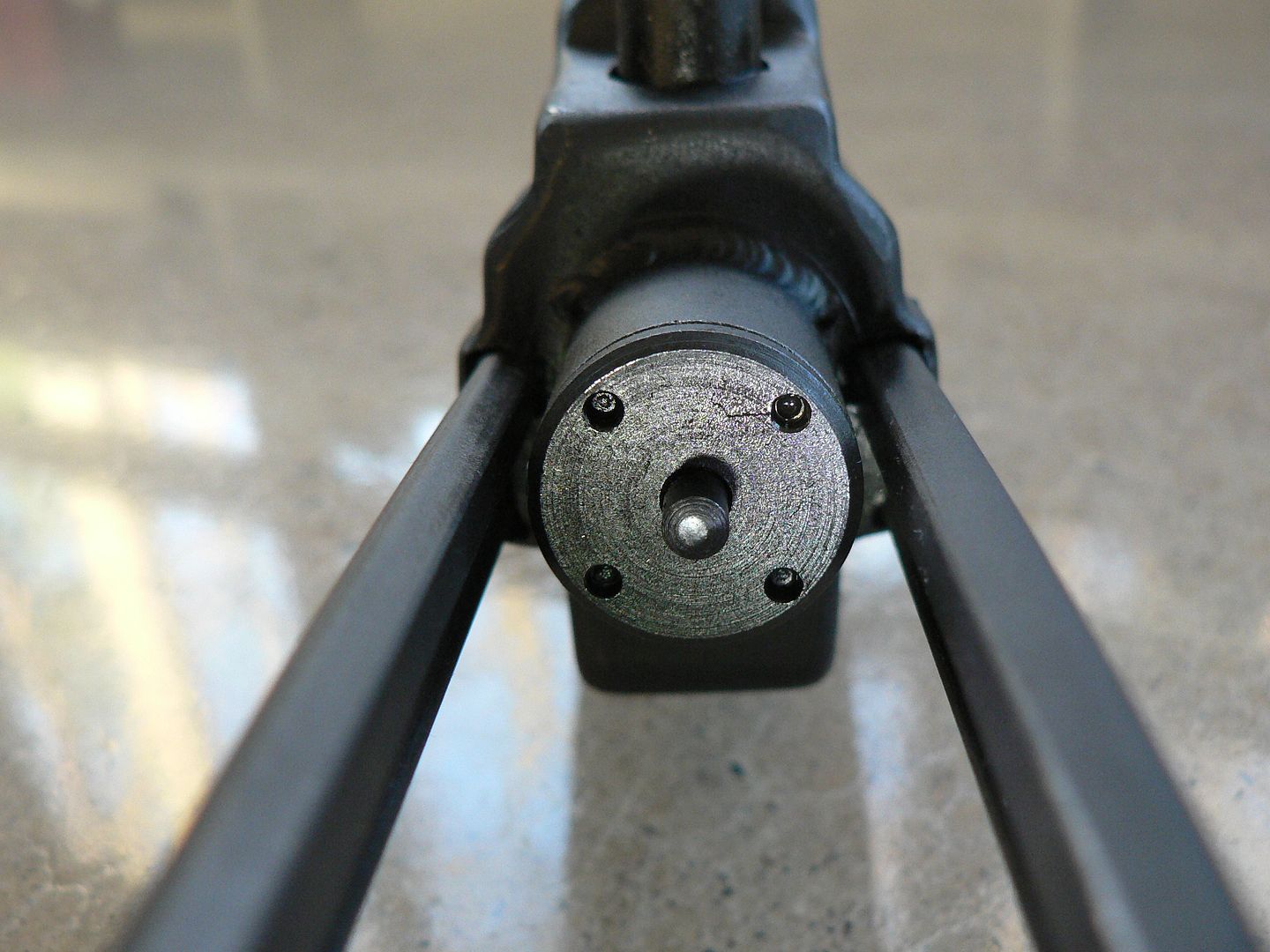
I assume all the guts are held in by a threaded cap. The four holes are most likely for a special tool to fit into for unscrewing it. While I'd just LOVE to rip this thing apart, my better judgement tells me to just leave it alone so that's what I'm going to do...….I mean, it should be pretty obvious what makes this thing tick but I still realllly want to disassemble it and see.....we'd better move on now.
Going back to this picture:

You can see a vertical line running down from the lock button. That's nothing more than where the two stamped sheet metal parts that comprise the main body of the backplate meet. Then the buffer tube is welded on. You can see this weld and it's very nicely done.
A bottom view showing the weld:
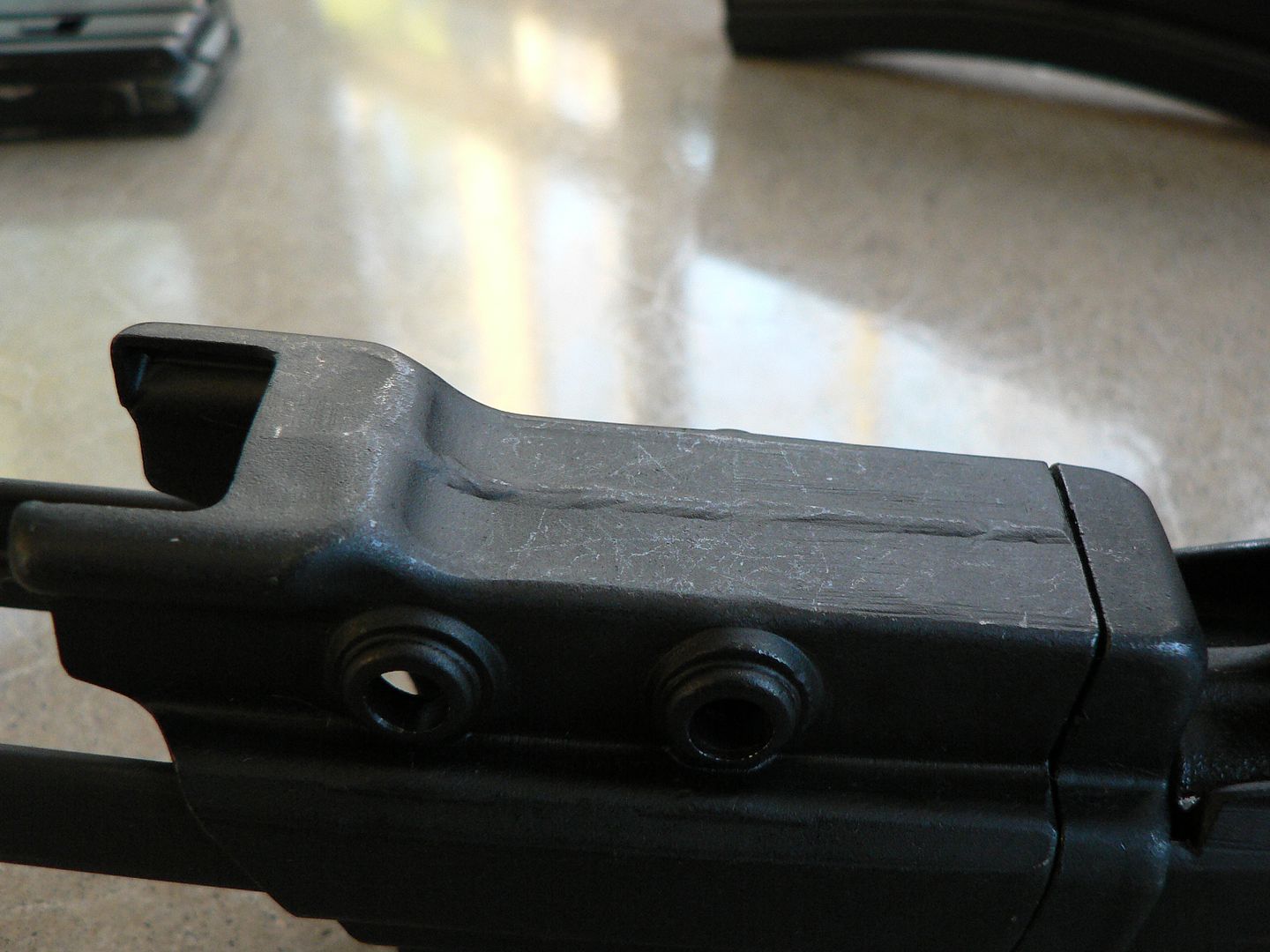
Note the reinforcement where the stock pins fit.
A bottom three quarter view showing again how neat and clean the buffer tube weld is:
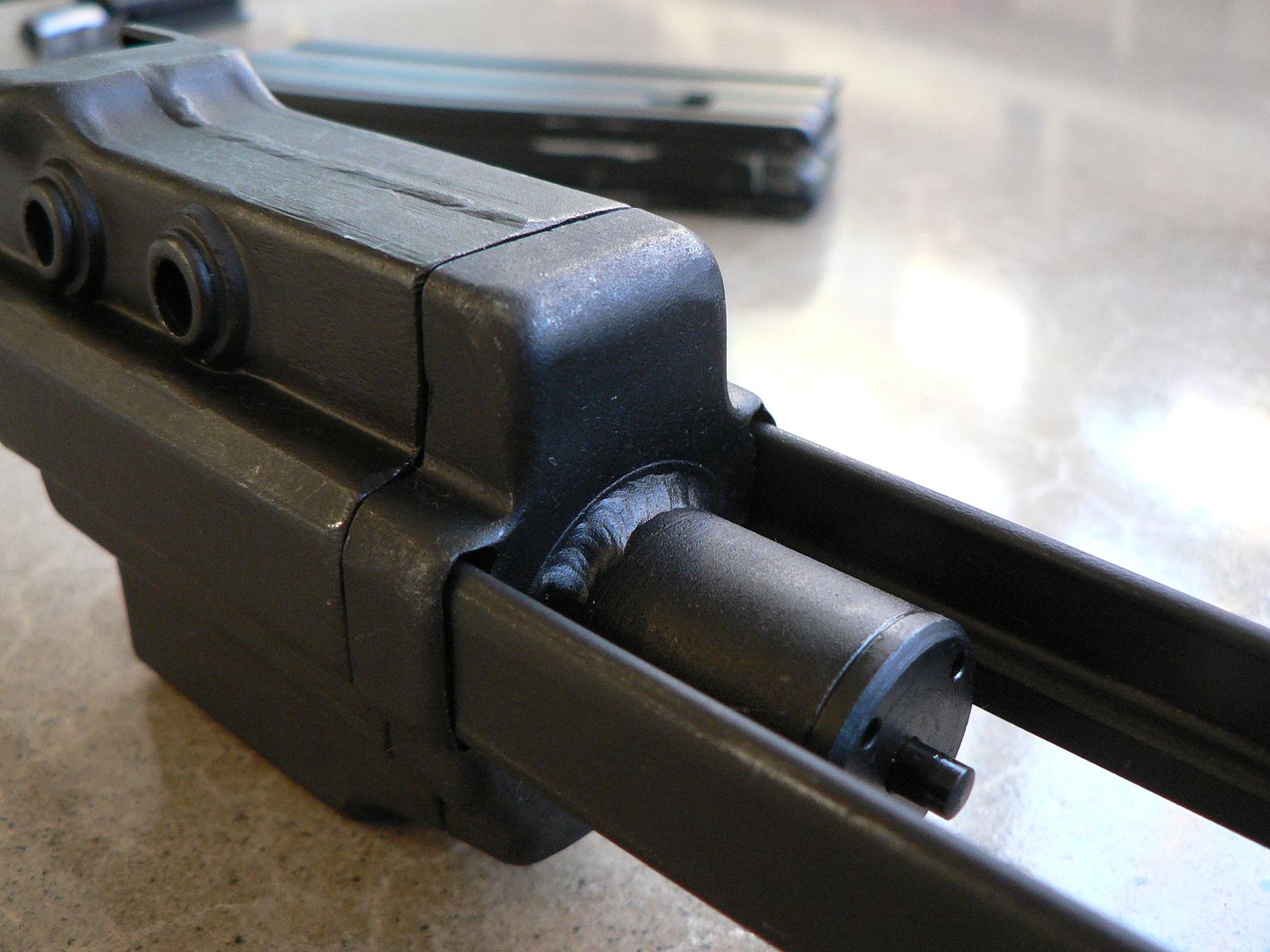
A closeup of the lock button:
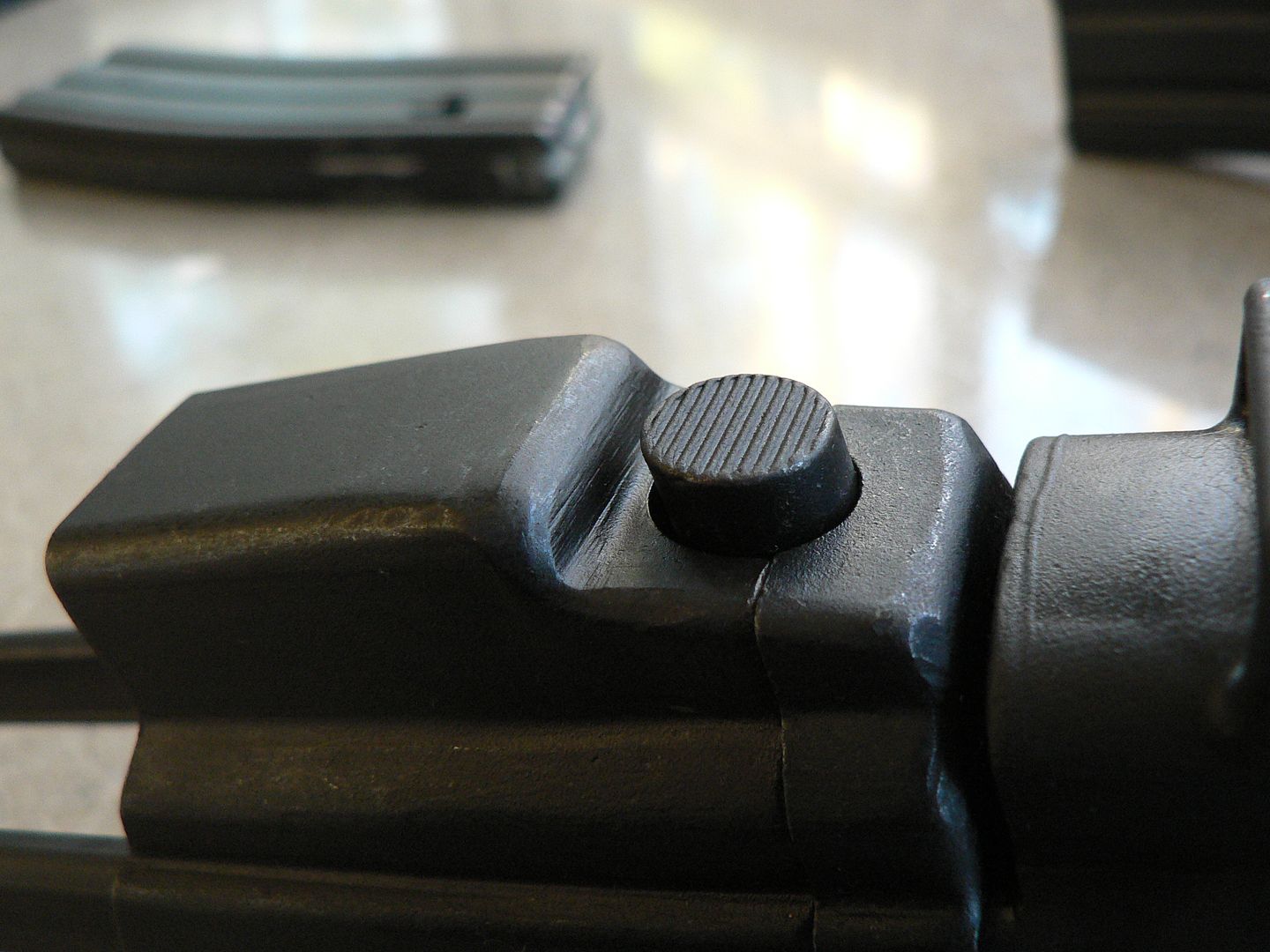
If you ask me, this setup is more ergonomic than the paddle arrangement on an HK stock.
A view inside the backplate:
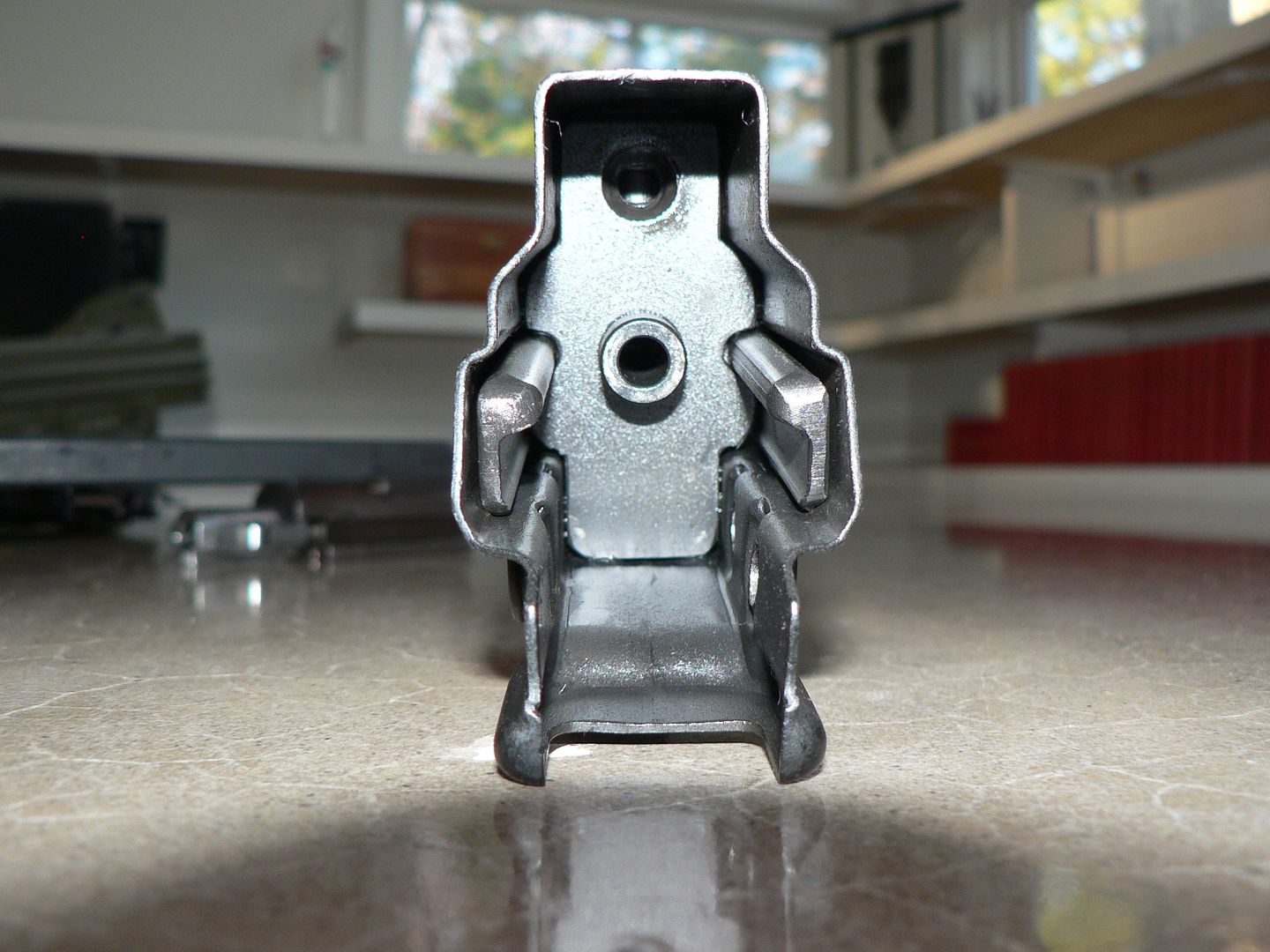
The hollow tube in the center is the buffer plunger. When the bolt carrier nears the limit of its rearward movement during recoil, it contacts this plunger and through it compresses the buffer spring. The round hole at the top of the backplate is where the rear of the recoil spring assembly nests.
Here, we see a cutout in the right side stock arm just forward of the butt:
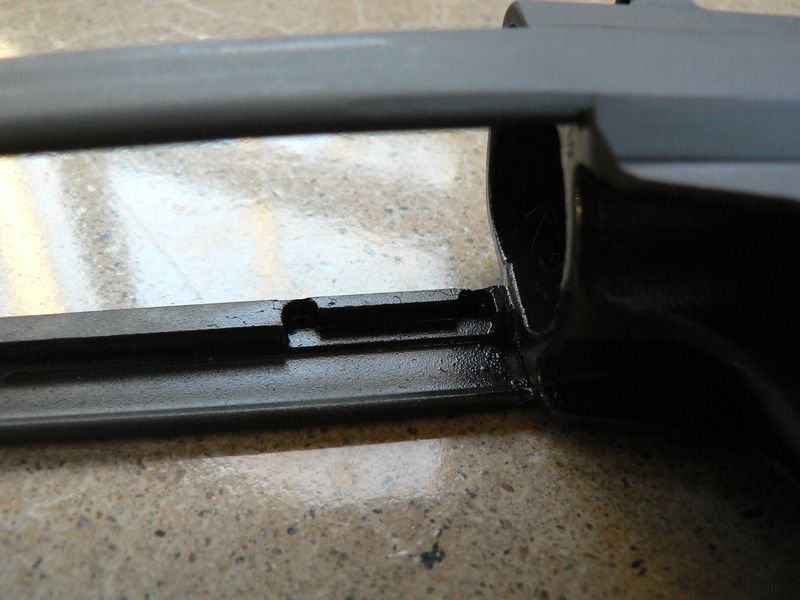
The left side stock arm has one too:
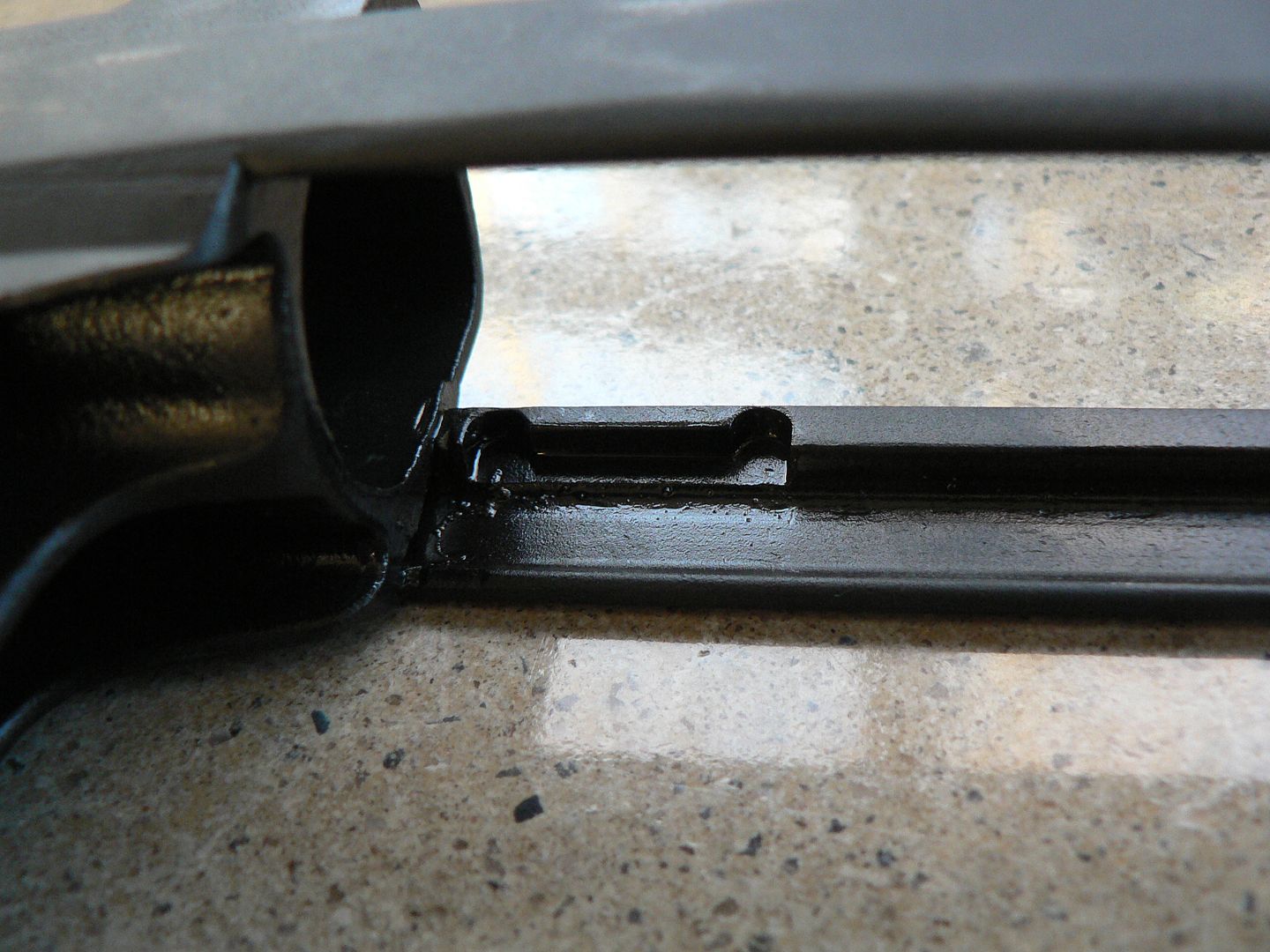
These are engaged by magical lugs hidden deep inside the back plate, securing the stock in the closed position until the lock button is pressed. MAN....I wanna tear this thing apart so bad.
Logic would dictate that if you have cutouts in the arms used to keep the stock closed, then you also must have cutouts that are used to secure it open. As Spock has shown again and again (or will show...you know...in the future), logic is almost always correct:
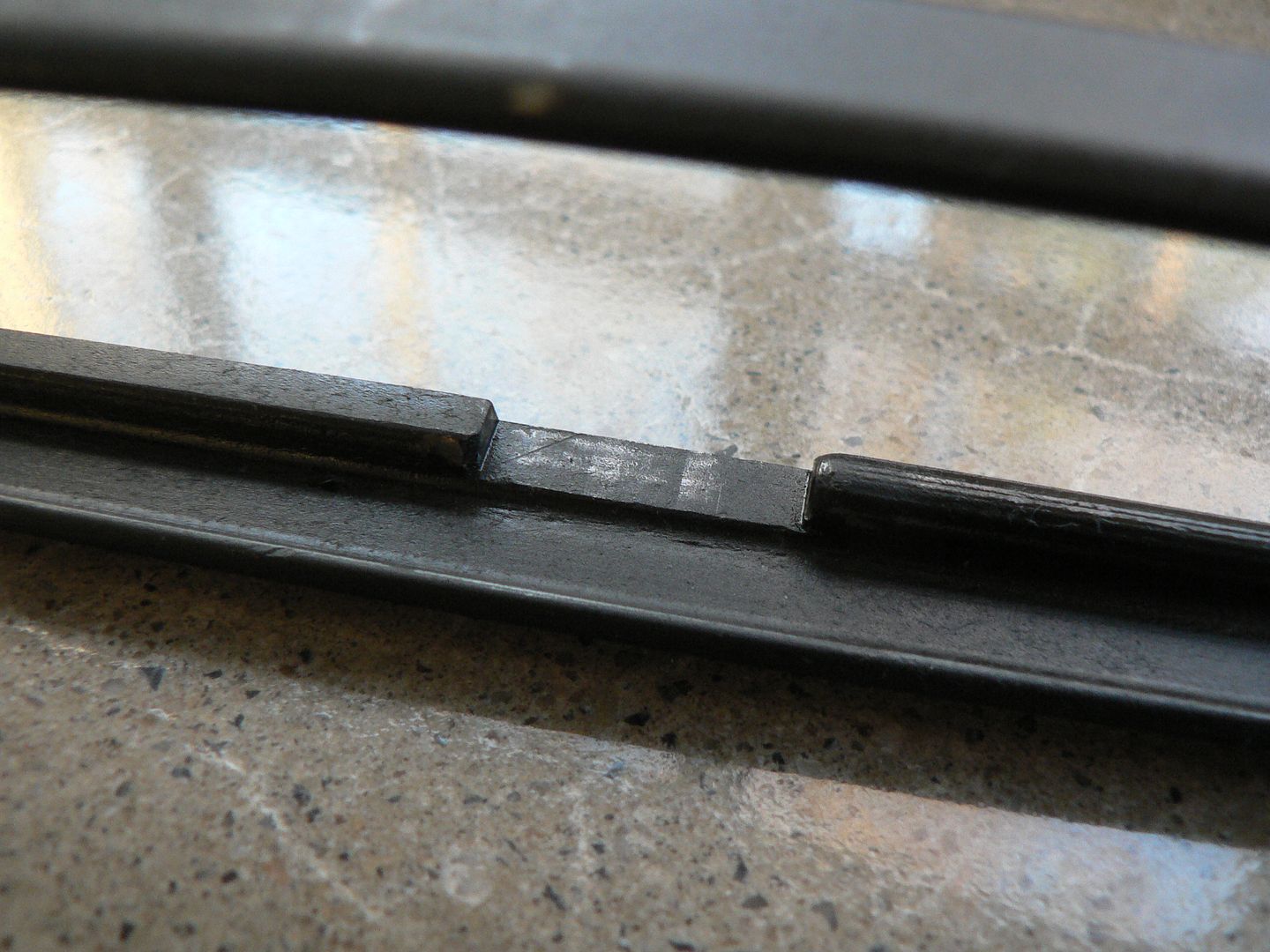
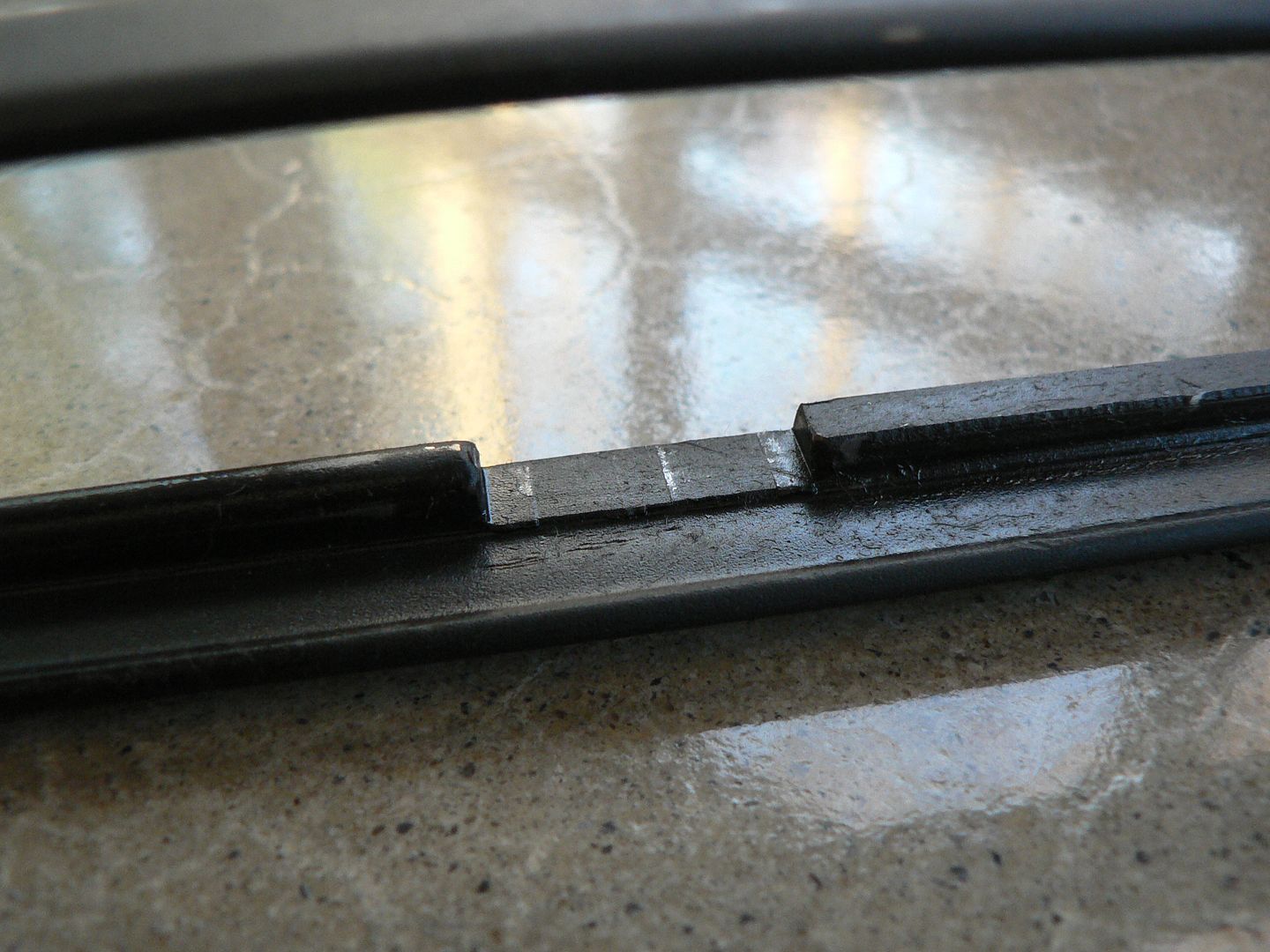
I forget which is which above but one is the right side arm and the other is the left side arm. The CETME LC stock only has two positions, open and closed. There are no multiple tacticool positions for the use of body armor. Open and closed......a simpler stock for a simpler time.
This last stock picture shows a CETME LC stock arm on the left and an HK93 on the right:
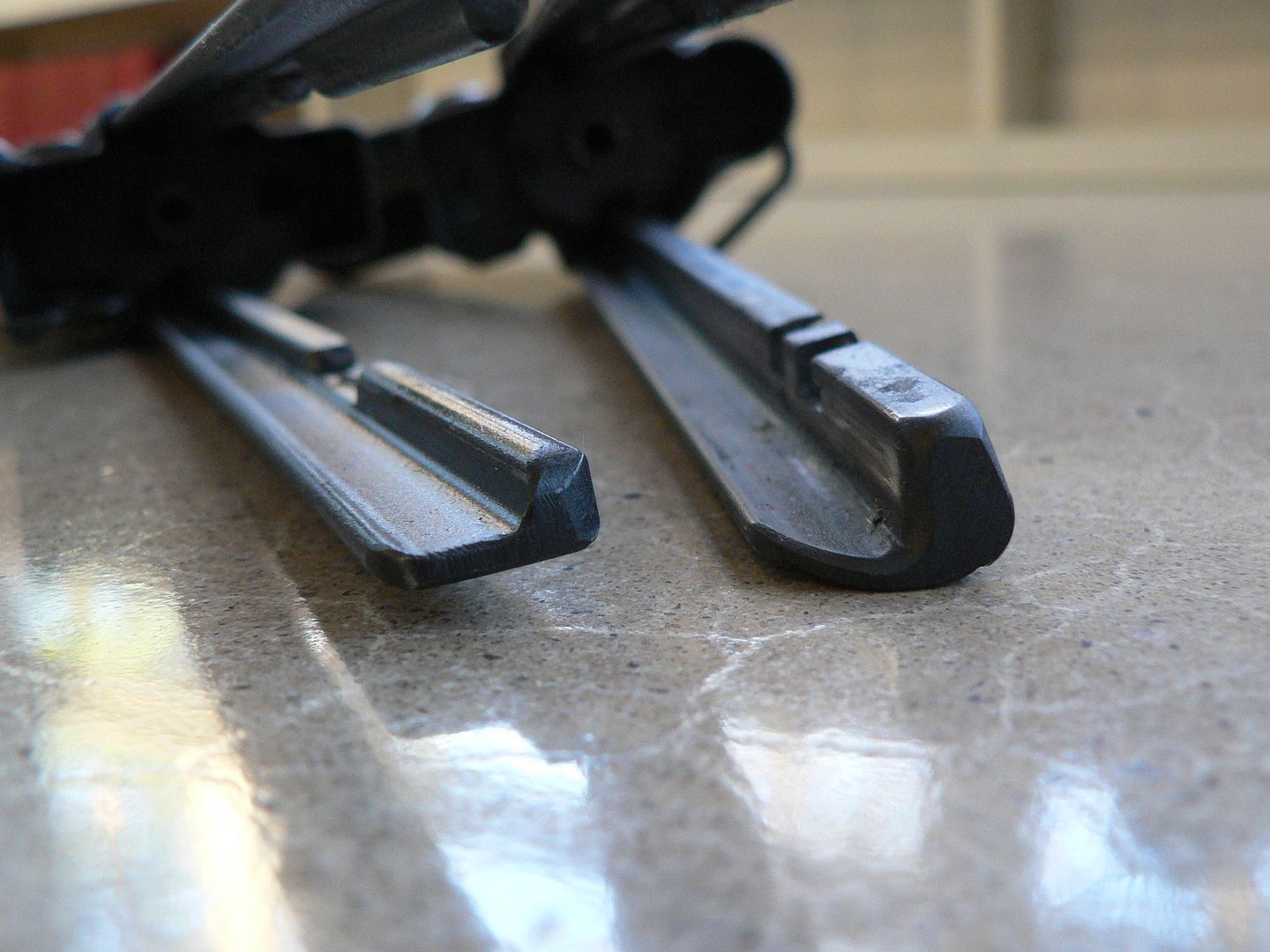
Now, I'd be lying if I said the LC stock felt as sturdy as an HK. When removed from the rifle it actually feels pretty wobbly and rickety. But when assembled onto the rifle, the wobble goes away and it's actually plenty rigid for any use you or I are ever going to put it through. And frankly, the HK stock is overbuilt. Not that that's a bad thing but it is a fact. If you squeeze the stock arms on the HK, they don't move at all. On the LC, there is some slight flex (a study of the above picture and it should be obvious why) but it's minimal. Again, it's more than adequate for normal use. Just don't use it to bash doors in and you'll be fine.
One last picture before signing off showing the MarColMar CETME LC with it's siblings, the L (in the middle) and the LV (at top):
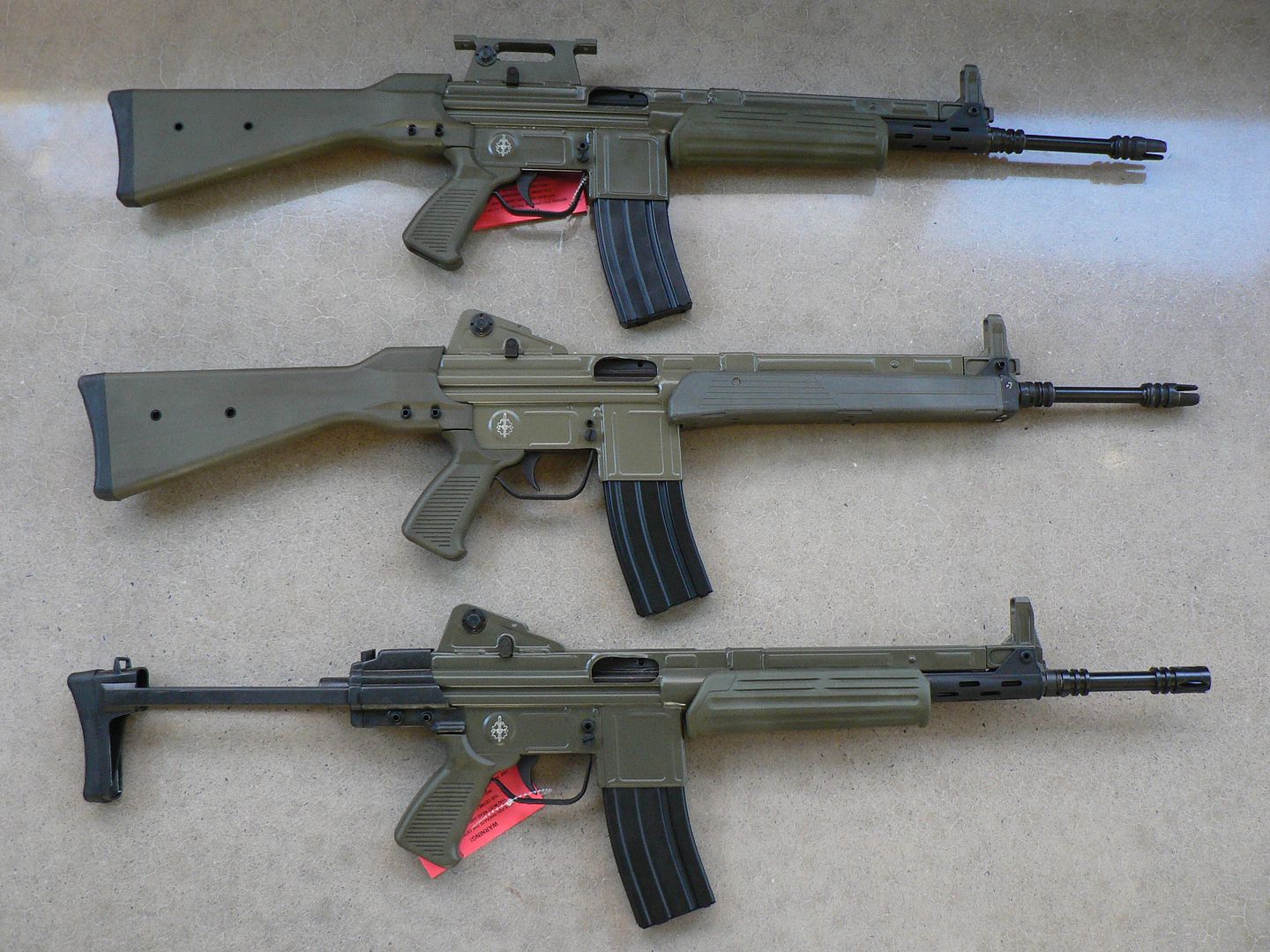
I haven't taken this to the range yet and, truth be told, I may not. With only 640 or so being manufactured by MCM, it's sure to skyrocket in value as the years go by so new in box is a nice way to have one and, judging by the serial numbers I've seen, I think mine just might be the first series production example. Besides, my eyes are getting older and my iron sights days are numbered. But if I do end up taking it out for a spin, I'll post the results here. In the meantime, my recommendation to you is that you buy one now, while they are available. My MCM CETME L runs like a singer sewing machine. After disassembling the LC and carefully scrutinizing every little detail, I can honestly say that it's at least as well built as my L so I would expect it to perform as well too. Buy one.....you won't regret it. Thank you for your time, God bless you and may you have a wonderful Christmas! Bye!!
I love you and I miss you mom. Please keep lighting my path; you're doing great.
The only thing we haven't looked at yet is the stock so that's what we're gonna do now.
Here, it's shown in the extended position alongside an HK93 stock for dimensional comparison:

And retracted:

The butt pad is steel wrapped in rubber and is the same one used on both the L and LV. As mentioned earlier, it's manufactured by MCM and is identical to an original when mounted:

It's held on by two hex screws (originals were probably slotted) and, because the stock itself is of original Spanish manufacture, the screws are metric threaded.
They are also NOT interchangeable with those found on the L and LV, both of which use a screw that is longer and has standard threads because their stocks are US made:

That's the LC screw on the left in case you were wondering.
A close-up of the butt with the pad removed showing the forge line:

The other side has a reinforcement rib:

The top mounted sling swivel is a separate welded on part that is either cast or forged:

The stock arms are attached bar stock with nicely dressed welds:

There is a cavity molded into the butt allowing it to telescope around the buffer tube when the stock is closed providing a more compact package:

The circle seen in the middle of the cavity is a raised reinforced area that rides against the open-assist plunger built into the backplate. The who that rides against the what?? Keep reading and all will be revealed in the next picture.
Here is the backplate:

The large round bit houses the buffer spring and the little round rod sticking out of it is the spring loaded extension-assist plunger. If you're familiar with an HK A3 stock, it has one too. When you close the stock, the raised reinforced area we saw in the butt cavity pushes against the this rod and forces it into the buffer housing compressing its spring (NOT the buffer spring but a separate spring). Then, when you press the ribbed lock button on top the back plate to extend the stock, that little spring loaded rod pushes the butt plate back a few millimeters to assist you. The point of this is to allow you to extend the stock with one hand. If it wasn't on there, you would have to depress the lock button with one hand while pulling the stock to the rear with the other hand. This way, you press the button, the assist rod pushes the butt back a bit, you release the button and then you extend the stock...all with one hand. Nifty thrifty!!
Here's a detail shot showing the rear of the buffer housing:

I assume all the guts are held in by a threaded cap. The four holes are most likely for a special tool to fit into for unscrewing it. While I'd just LOVE to rip this thing apart, my better judgement tells me to just leave it alone so that's what I'm going to do...….I mean, it should be pretty obvious what makes this thing tick but I still realllly want to disassemble it and see.....we'd better move on now.
Going back to this picture:

You can see a vertical line running down from the lock button. That's nothing more than where the two stamped sheet metal parts that comprise the main body of the backplate meet. Then the buffer tube is welded on. You can see this weld and it's very nicely done.
A bottom view showing the weld:

Note the reinforcement where the stock pins fit.
A bottom three quarter view showing again how neat and clean the buffer tube weld is:

A closeup of the lock button:

If you ask me, this setup is more ergonomic than the paddle arrangement on an HK stock.
A view inside the backplate:

The hollow tube in the center is the buffer plunger. When the bolt carrier nears the limit of its rearward movement during recoil, it contacts this plunger and through it compresses the buffer spring. The round hole at the top of the backplate is where the rear of the recoil spring assembly nests.
Here, we see a cutout in the right side stock arm just forward of the butt:

The left side stock arm has one too:

These are engaged by magical lugs hidden deep inside the back plate, securing the stock in the closed position until the lock button is pressed. MAN....I wanna tear this thing apart so bad.
Logic would dictate that if you have cutouts in the arms used to keep the stock closed, then you also must have cutouts that are used to secure it open. As Spock has shown again and again (or will show...you know...in the future), logic is almost always correct:


I forget which is which above but one is the right side arm and the other is the left side arm. The CETME LC stock only has two positions, open and closed. There are no multiple tacticool positions for the use of body armor. Open and closed......a simpler stock for a simpler time.
This last stock picture shows a CETME LC stock arm on the left and an HK93 on the right:

Now, I'd be lying if I said the LC stock felt as sturdy as an HK. When removed from the rifle it actually feels pretty wobbly and rickety. But when assembled onto the rifle, the wobble goes away and it's actually plenty rigid for any use you or I are ever going to put it through. And frankly, the HK stock is overbuilt. Not that that's a bad thing but it is a fact. If you squeeze the stock arms on the HK, they don't move at all. On the LC, there is some slight flex (a study of the above picture and it should be obvious why) but it's minimal. Again, it's more than adequate for normal use. Just don't use it to bash doors in and you'll be fine.
One last picture before signing off showing the MarColMar CETME LC with it's siblings, the L (in the middle) and the LV (at top):

I haven't taken this to the range yet and, truth be told, I may not. With only 640 or so being manufactured by MCM, it's sure to skyrocket in value as the years go by so new in box is a nice way to have one and, judging by the serial numbers I've seen, I think mine just might be the first series production example. Besides, my eyes are getting older and my iron sights days are numbered. But if I do end up taking it out for a spin, I'll post the results here. In the meantime, my recommendation to you is that you buy one now, while they are available. My MCM CETME L runs like a singer sewing machine. After disassembling the LC and carefully scrutinizing every little detail, I can honestly say that it's at least as well built as my L so I would expect it to perform as well too. Buy one.....you won't regret it. Thank you for your time, God bless you and may you have a wonderful Christmas! Bye!!
I love you and I miss you mom. Please keep lighting my path; you're doing great.
Combloc
Stop Negassing me!!!!!
I'd like to add a short addendum to this. While researching the 5.56 CETME, I often come across information about the original magazines for these rifles referring to them as being designed by the Spanish specifically for the CETME but that's not correct. What they actually are is a carbon copy of an early design FNC magazine. Let me illustrate. NOTE....If you're bored easily or really don't care about magazine minutia, now might be a good time to make your escape. You have been warned.
In the pictures that follow, a CETME Magazine is in the middle, an early FNC is on the right and a later FNC/STANAG 5.56 magazine is on the left. For identification purposes, I've marked the later one with a "-" using a white china marker.
Right side:
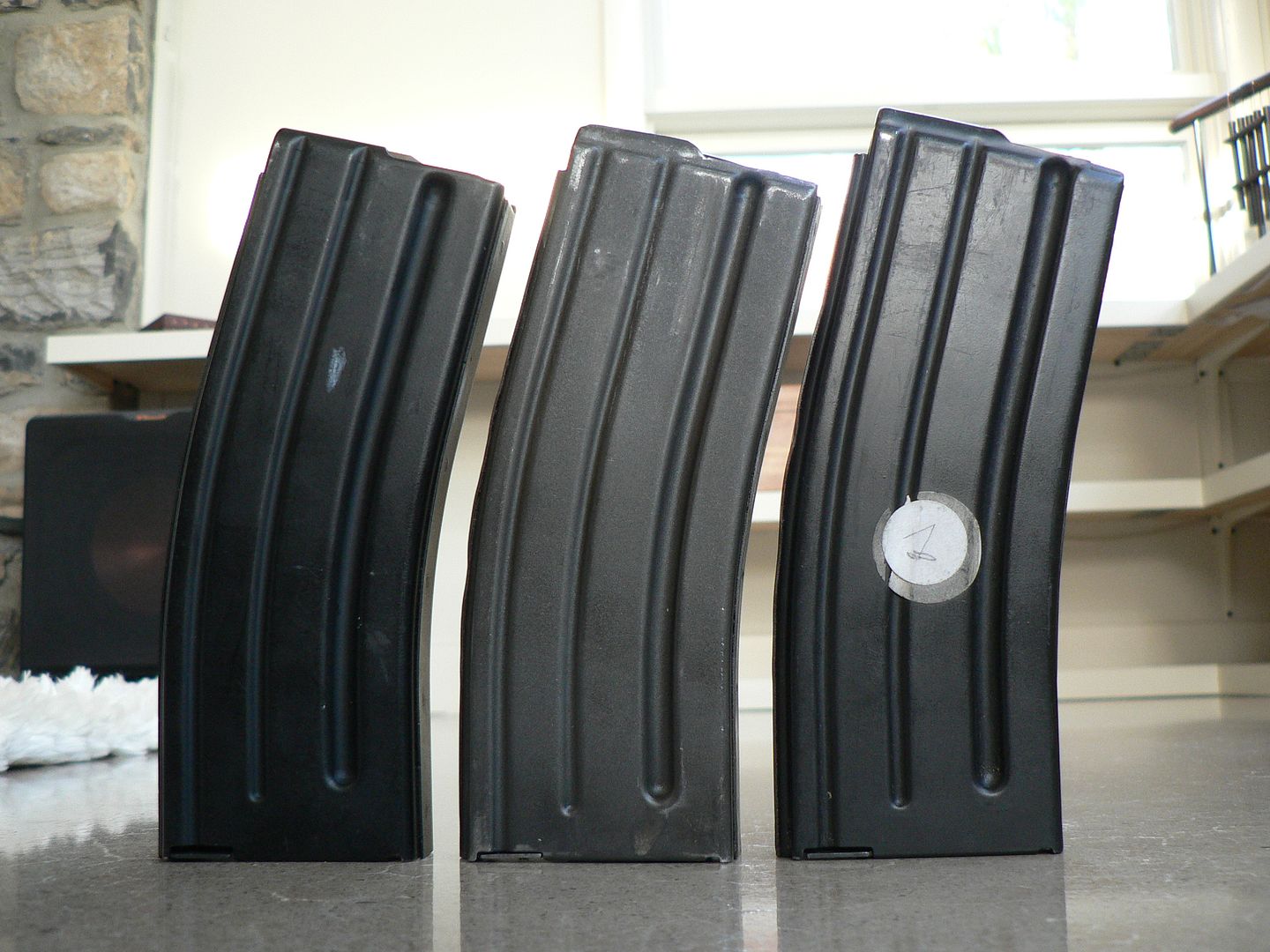
The feed lip contour is a little different on the later FN. We'll get to that in a bit. All are steel.
Front:
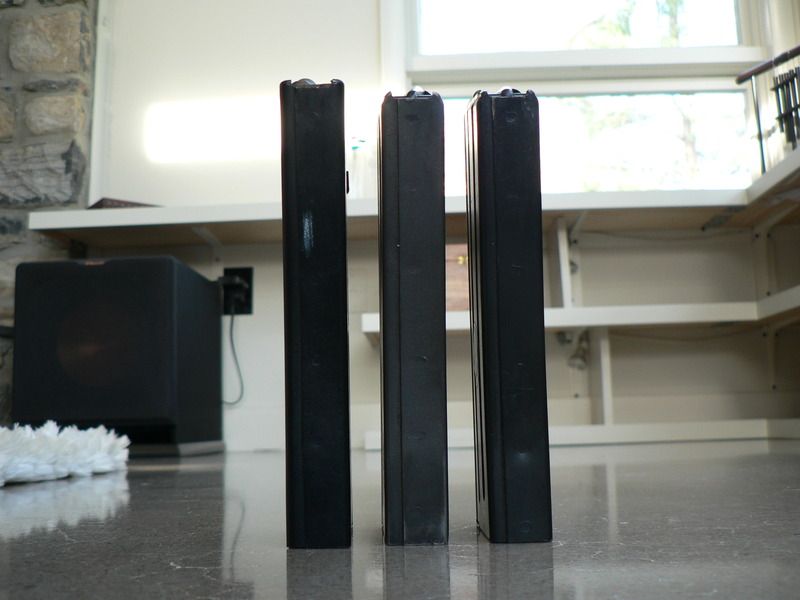
That's not an illusion you're seeing. The later one is taller and is the exact same height as a standard STANAG magazine.
Left side:
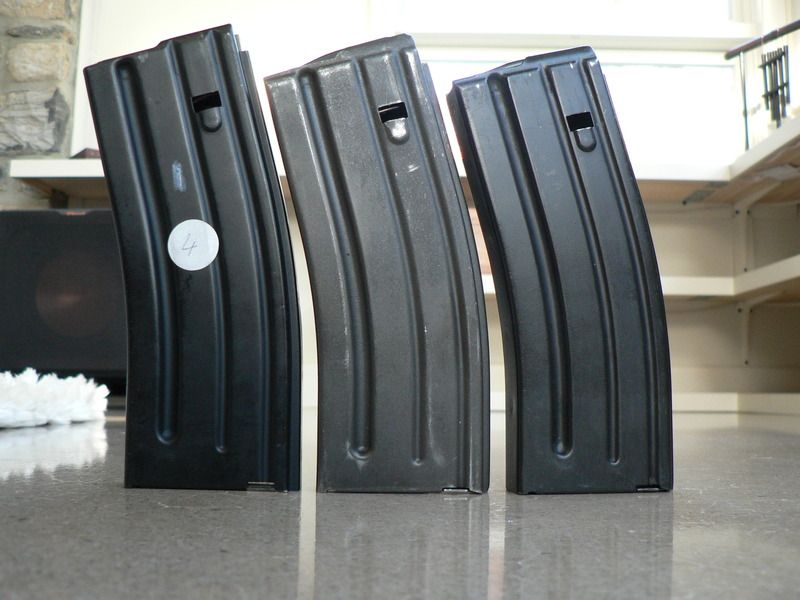
Rear:
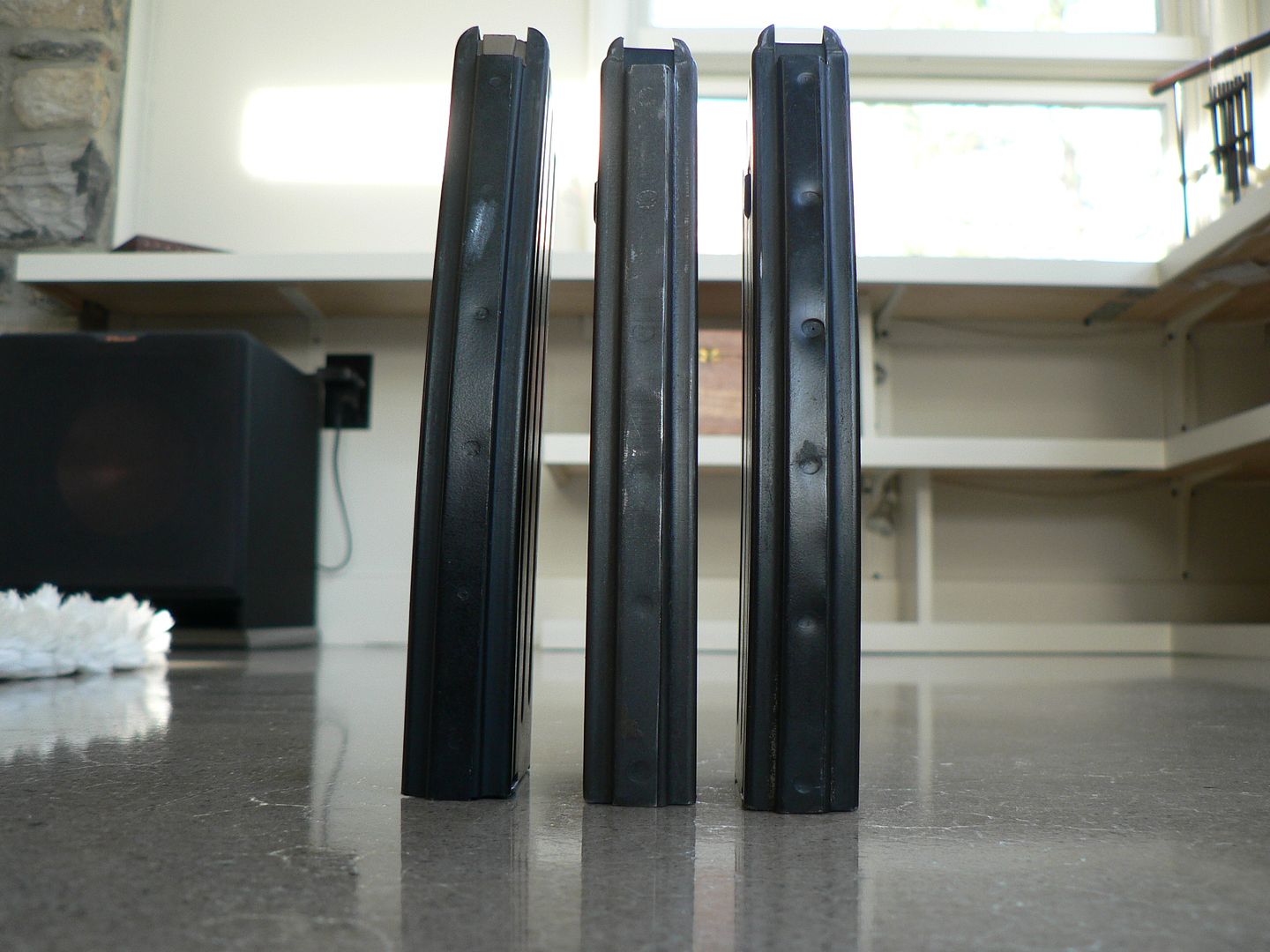
Top:
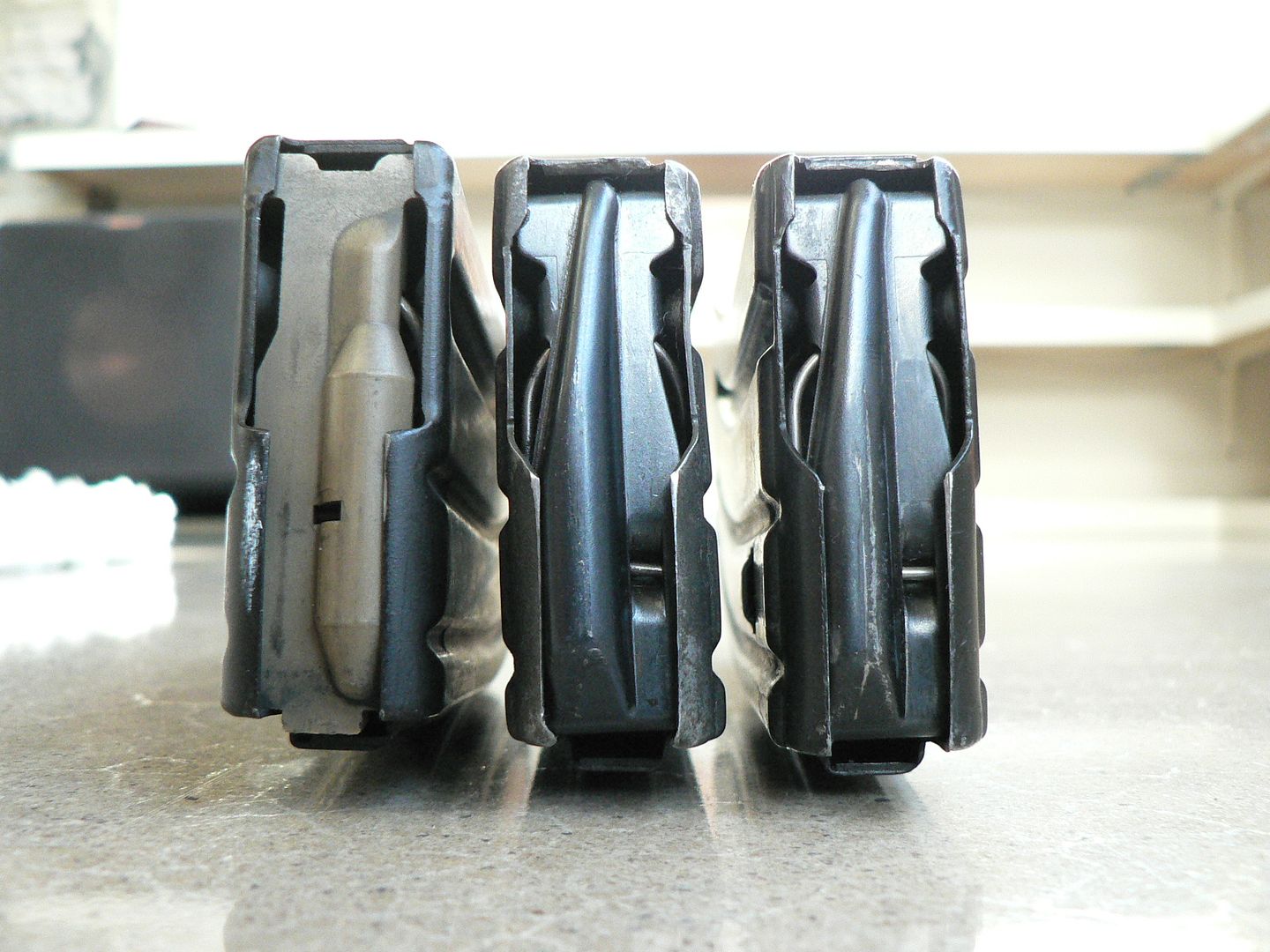
Notice that the newer magazine has a plastic follower designed to actuate the bolt holt open on a SCAR 16. Whether this magazine is an FNC that was upgraded or it was for a SCAR from the outset, I cannot say. What I can say is that both FN's are exactly as they were when they left Belgian service.
Bottom:
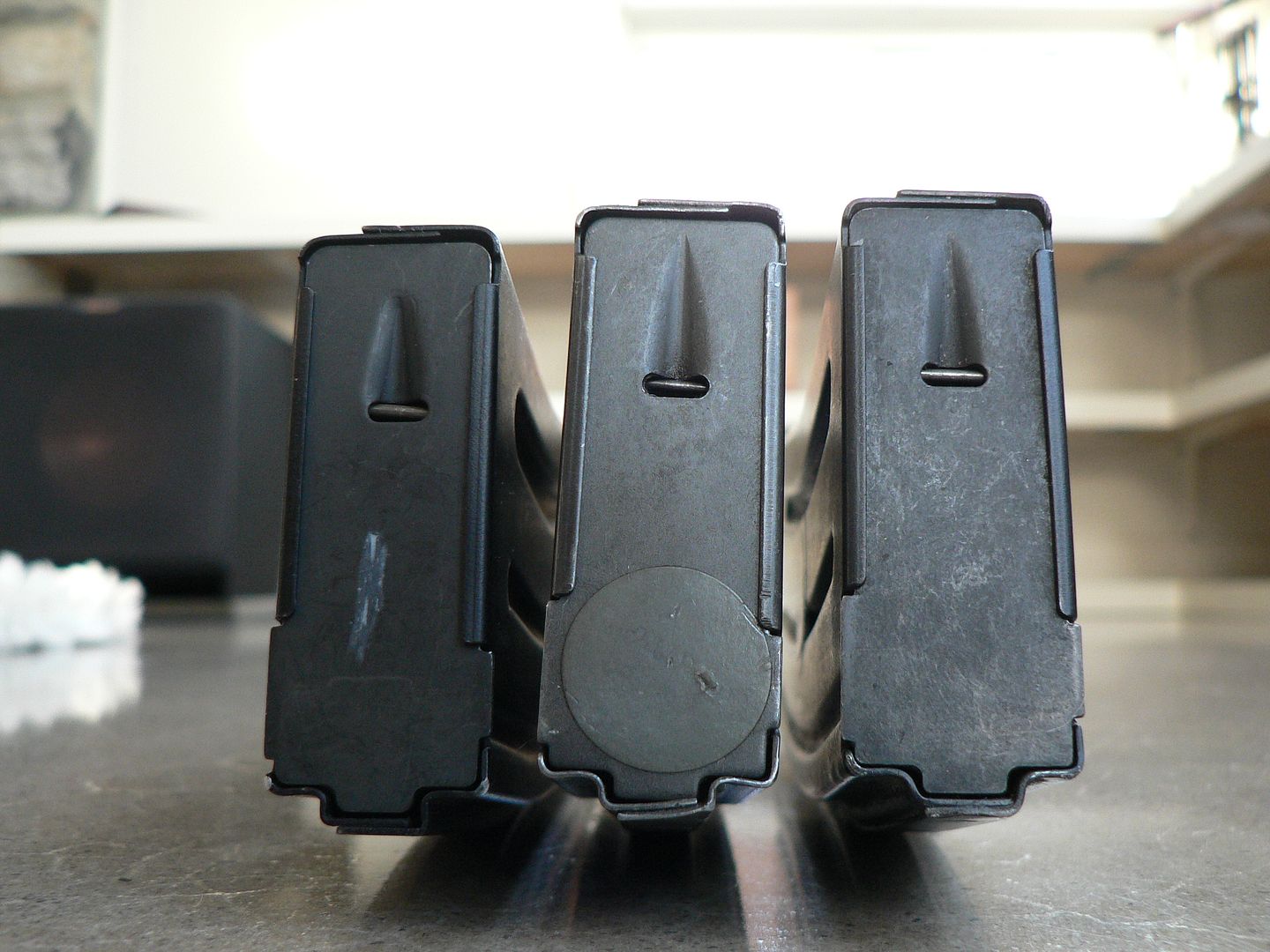
Closeup of the top rear:
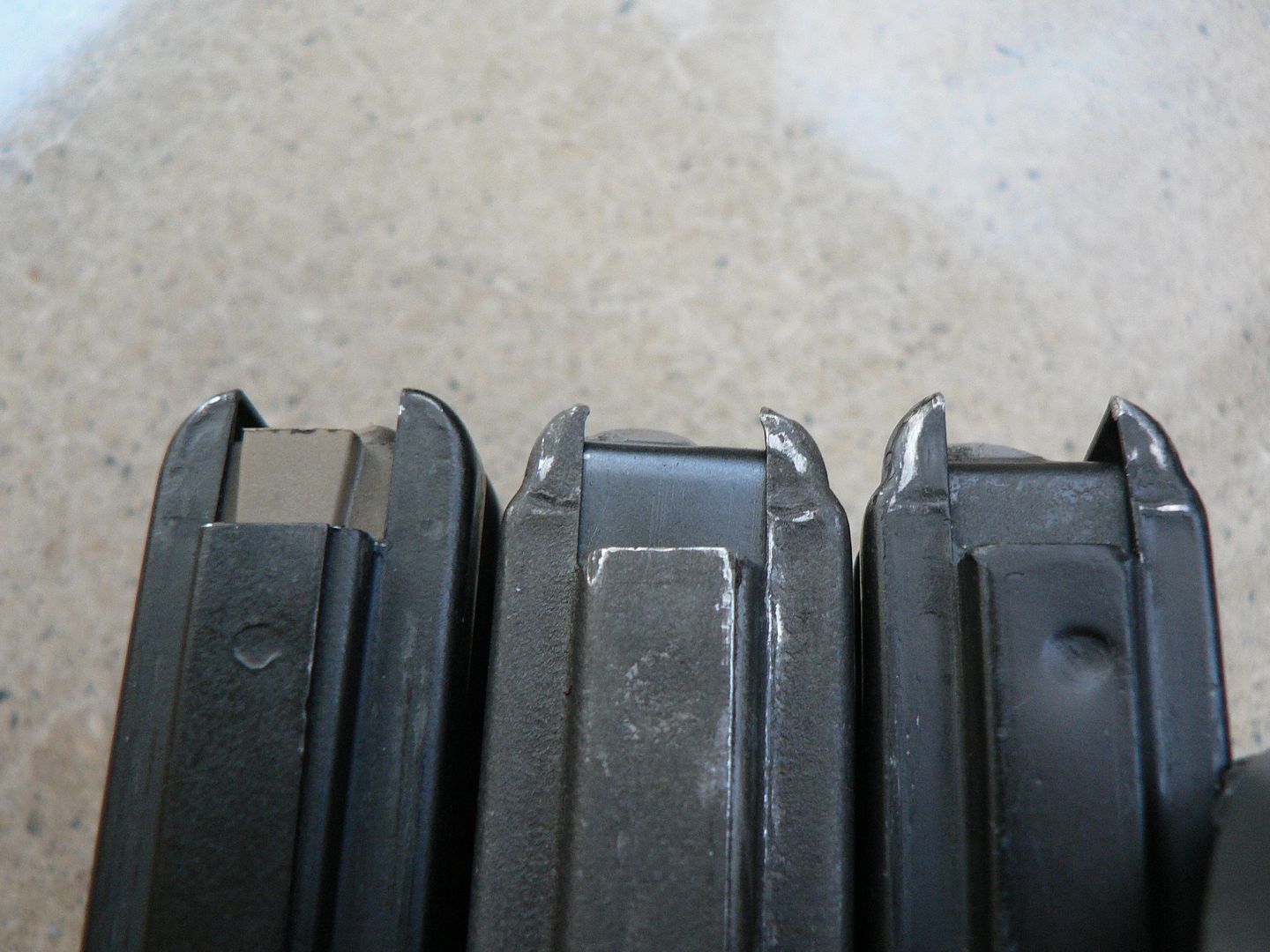
Notice that the newer follower is designed to actuate the bolt stop on a SCAR 16. It will also work just fine in an M16/M4/AR-15 . The CETME and early FNC will work in those rifles as well but your bolt won't lock back automatically. The FNC never had a bolt hold open feature.
Also of note is that the bolt carrier clearance notch is the exact same width on all three magazines. A STANAG magazine has a more narrow notch. For that reason alone, I suspect that the magazine on the left is an FNC that was updated for use in a SCAR 16.
In this picture, I have added a Colt STANAG magazine on the extreme left for comparison:
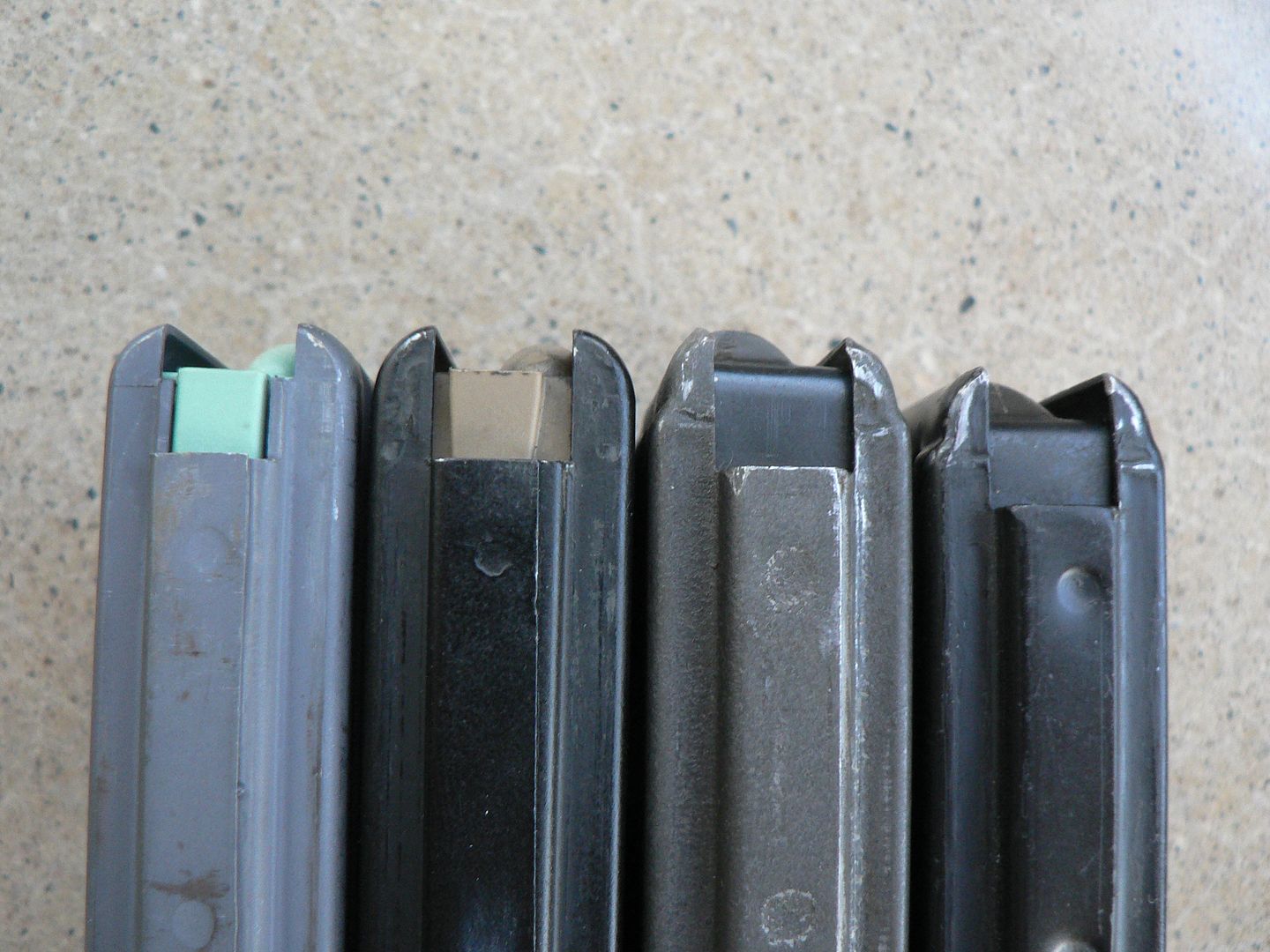
Here's a detail shot of the top of the earlier FNC magazine:
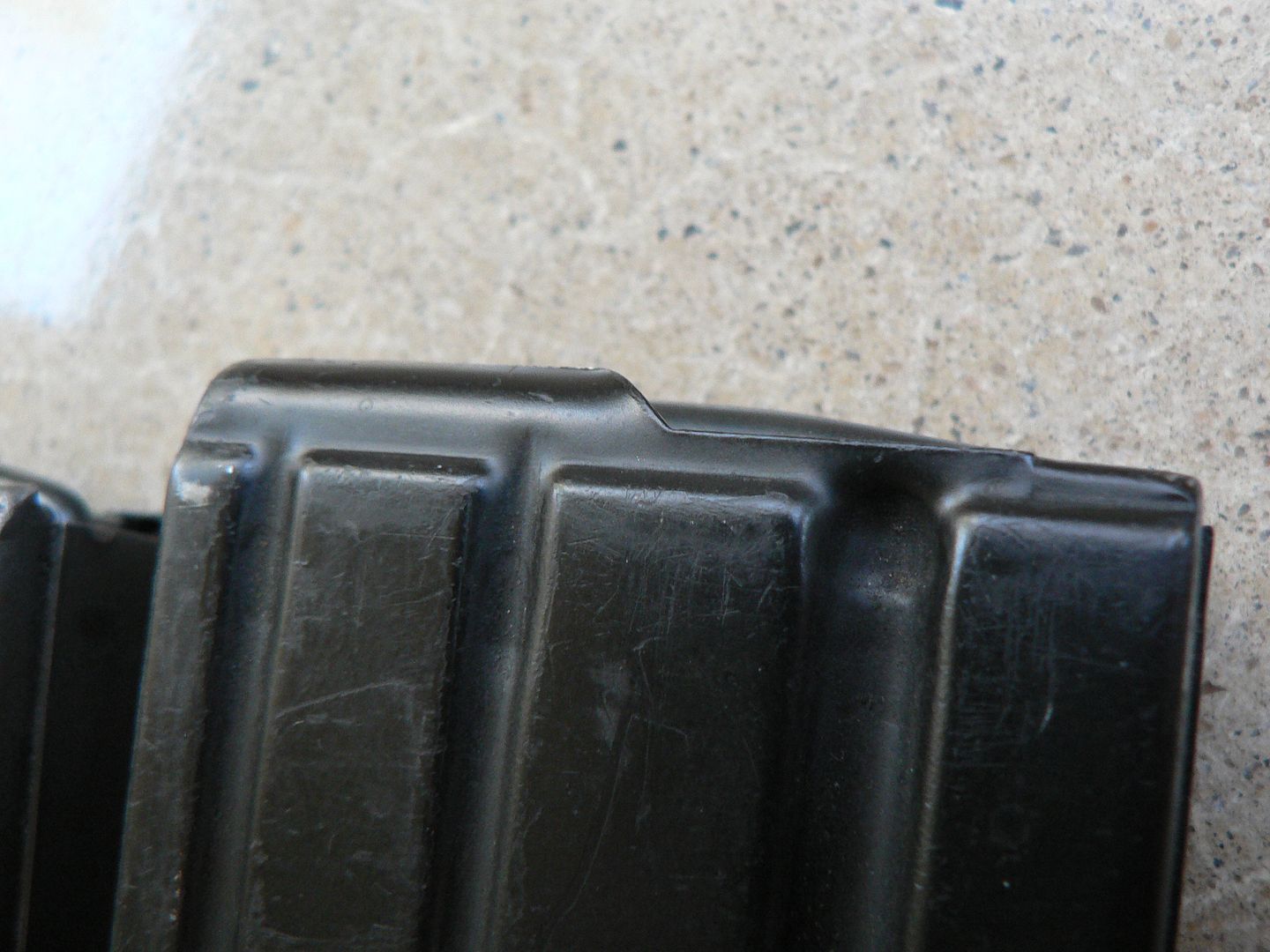
The CETME is identical.
And here is the same area on the newer design:
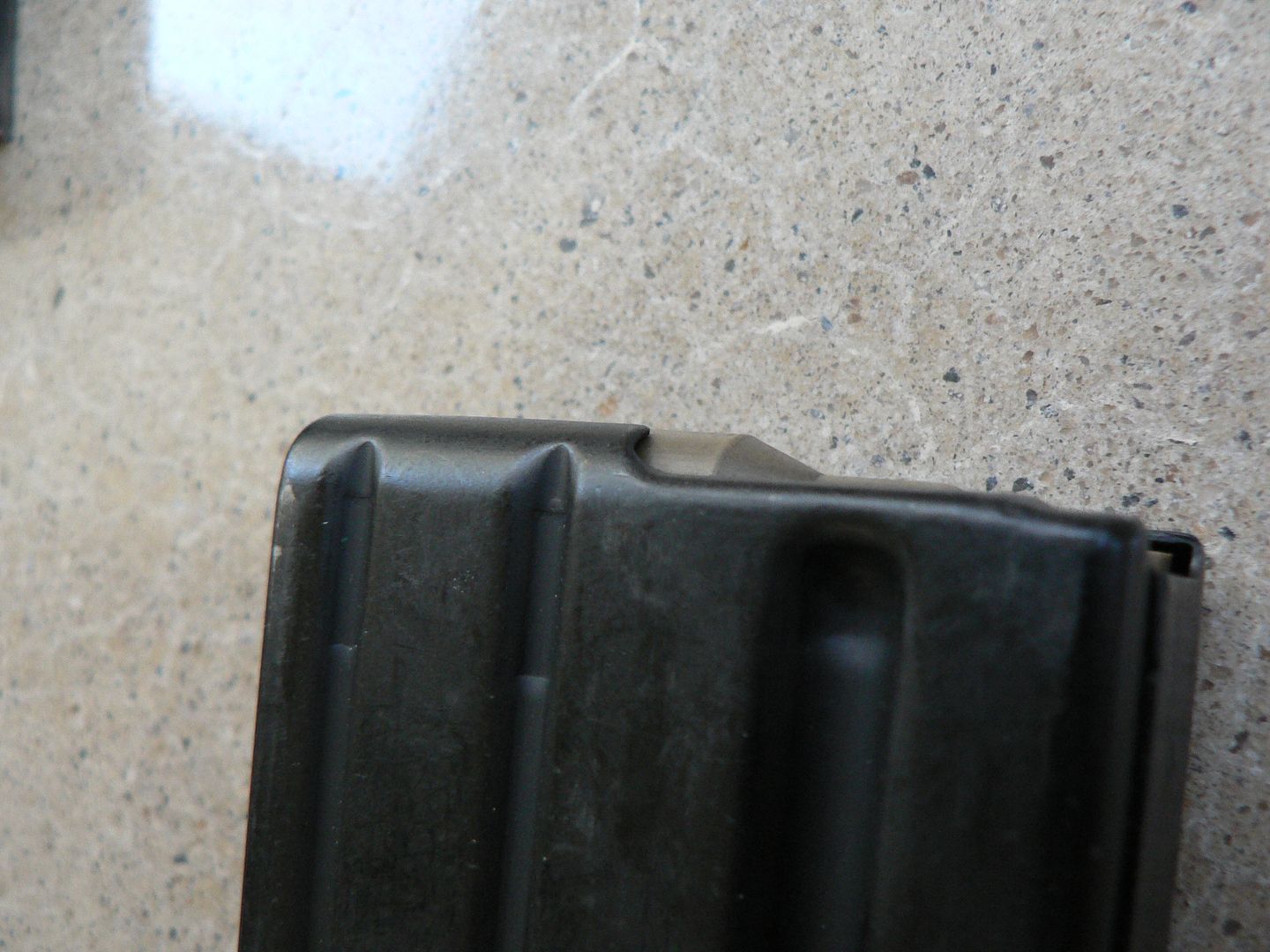
The distance between the feed lips is the same on both magazines but the overall shape and geometry is different. I assume this schtuff was changed for reliability reasons. That's a guess but I think it's a pretty safe one.
A comparison between the Colt (top) and the later FNC (bottom):
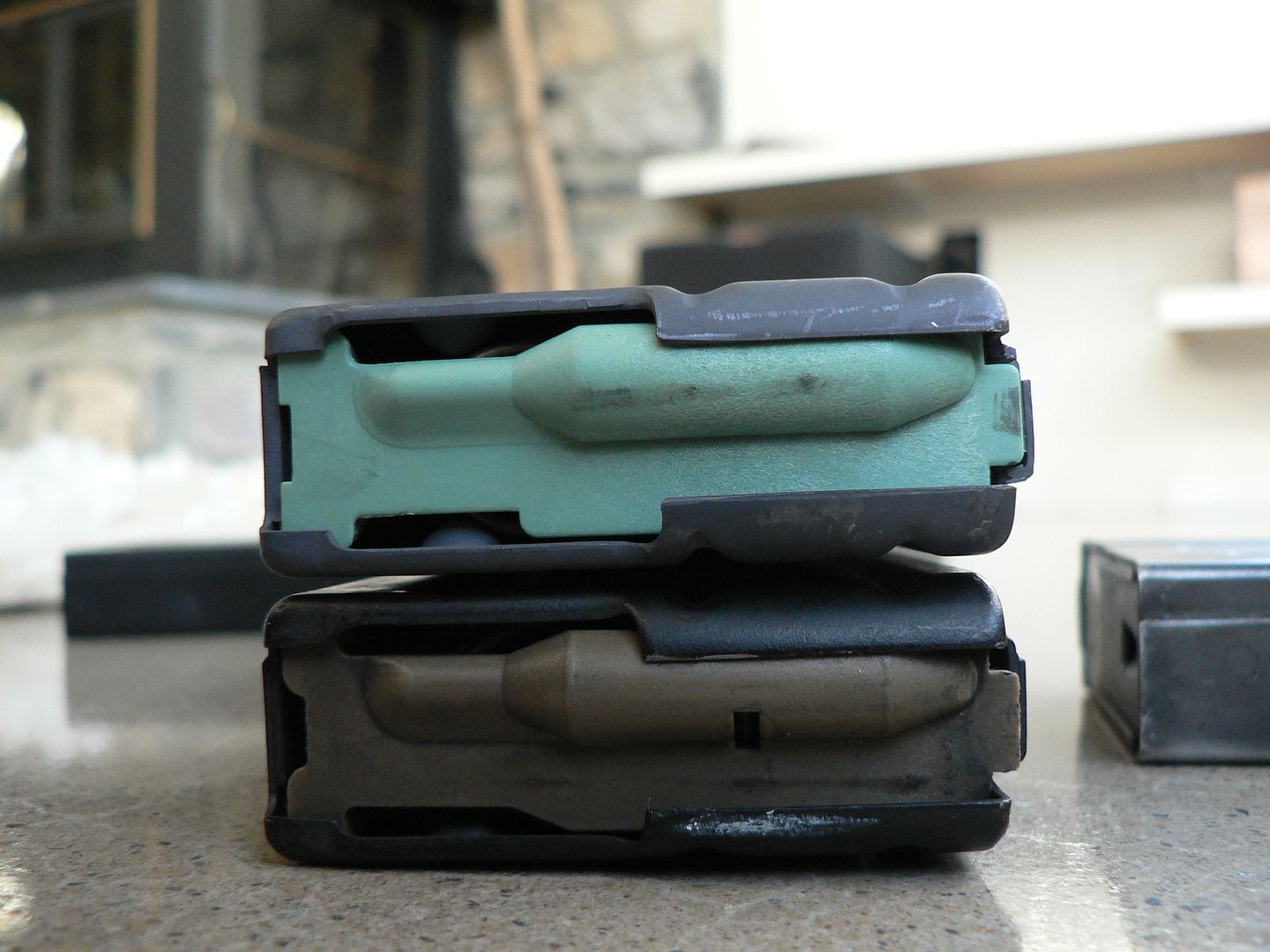
In every way that matters, they are identical.
And here is the Colt compared to the early FNC (which is identical to the CETME:
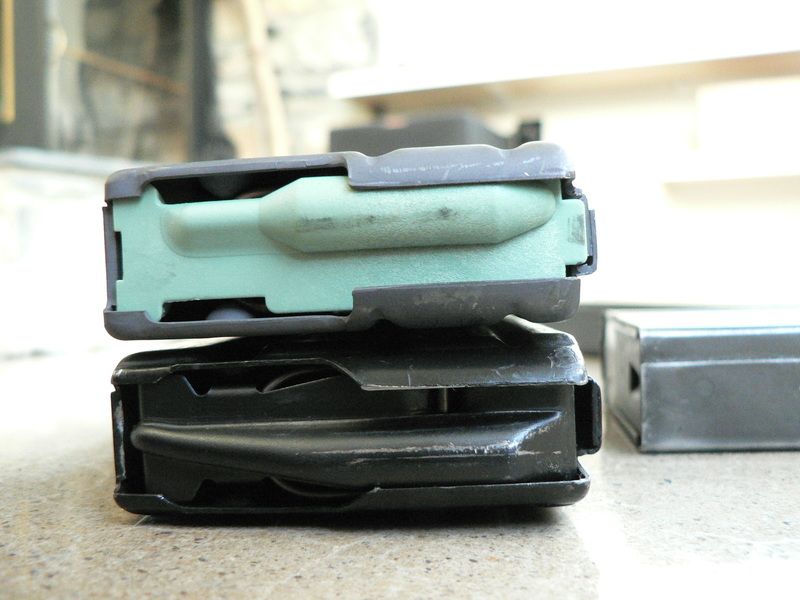
There are so many differences, I'm not even going to attempt to point them all out because I'll probably get it wrong anyways. Cut me a break Francis....I'm not an engineer you know! But if you study them closely, you'll see them. You're probably smarter than me anyways!
Alrighty...I'm done. Be honest;that was mind-numbingly dull wasn't it? Now you know more than you probably ever cared to know about FNC and CETME L magazines. YaY!!!
In the pictures that follow, a CETME Magazine is in the middle, an early FNC is on the right and a later FNC/STANAG 5.56 magazine is on the left. For identification purposes, I've marked the later one with a "-" using a white china marker.
Right side:

The feed lip contour is a little different on the later FN. We'll get to that in a bit. All are steel.
Front:

That's not an illusion you're seeing. The later one is taller and is the exact same height as a standard STANAG magazine.
Left side:

Rear:

Top:

Notice that the newer magazine has a plastic follower designed to actuate the bolt holt open on a SCAR 16. Whether this magazine is an FNC that was upgraded or it was for a SCAR from the outset, I cannot say. What I can say is that both FN's are exactly as they were when they left Belgian service.
Bottom:

Closeup of the top rear:

Notice that the newer follower is designed to actuate the bolt stop on a SCAR 16. It will also work just fine in an M16/M4/AR-15 . The CETME and early FNC will work in those rifles as well but your bolt won't lock back automatically. The FNC never had a bolt hold open feature.
Also of note is that the bolt carrier clearance notch is the exact same width on all three magazines. A STANAG magazine has a more narrow notch. For that reason alone, I suspect that the magazine on the left is an FNC that was updated for use in a SCAR 16.
In this picture, I have added a Colt STANAG magazine on the extreme left for comparison:

Here's a detail shot of the top of the earlier FNC magazine:

The CETME is identical.
And here is the same area on the newer design:

The distance between the feed lips is the same on both magazines but the overall shape and geometry is different. I assume this schtuff was changed for reliability reasons. That's a guess but I think it's a pretty safe one.
A comparison between the Colt (top) and the later FNC (bottom):

In every way that matters, they are identical.
And here is the Colt compared to the early FNC (which is identical to the CETME:

There are so many differences, I'm not even going to attempt to point them all out because I'll probably get it wrong anyways. Cut me a break Francis....I'm not an engineer you know! But if you study them closely, you'll see them. You're probably smarter than me anyways!
Alrighty...I'm done. Be honest;that was mind-numbingly dull wasn't it? Now you know more than you probably ever cared to know about FNC and CETME L magazines. YaY!!!
Users who are viewing this thread
Total: 2 (members: 0, guests: 2)
Latest posts
-
Awareness/Mindset/Q&A get together with Bob "Ninja" Porras. Delta/CIA guy. Thursday April 18,2024 (4 Viewers)
- Latest: MiniOutrider
-
-
-
-
-
-
Forum statistics
Latest threads
-
-
-
-
-
-
Hair-trigger posting... please include more than just the "headline" (1 Viewer)
- Started by Mr H
- Replies: 13
-

